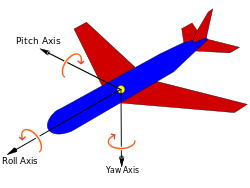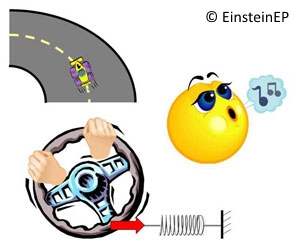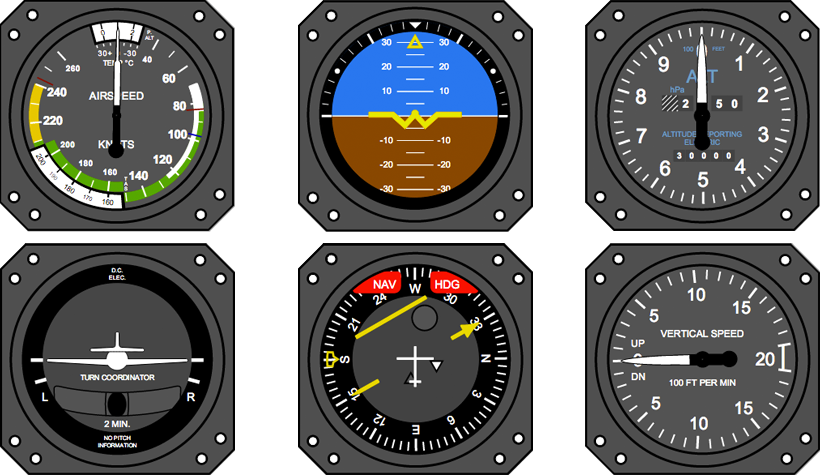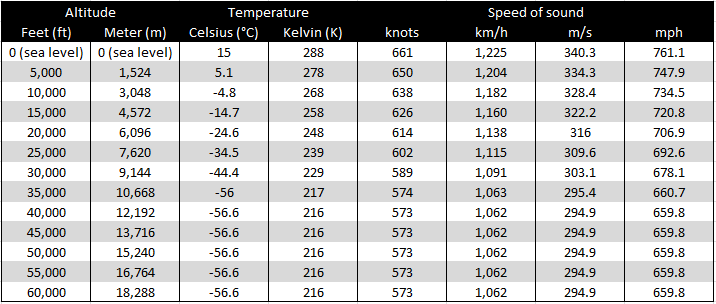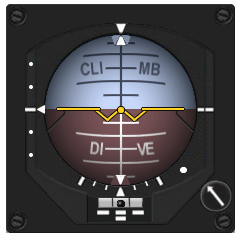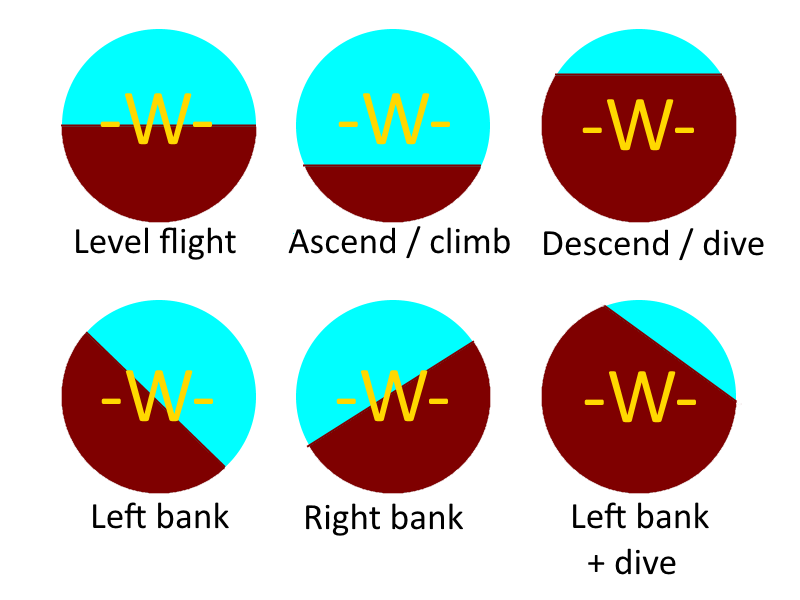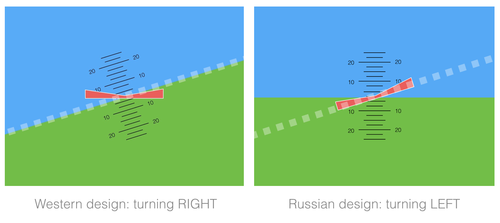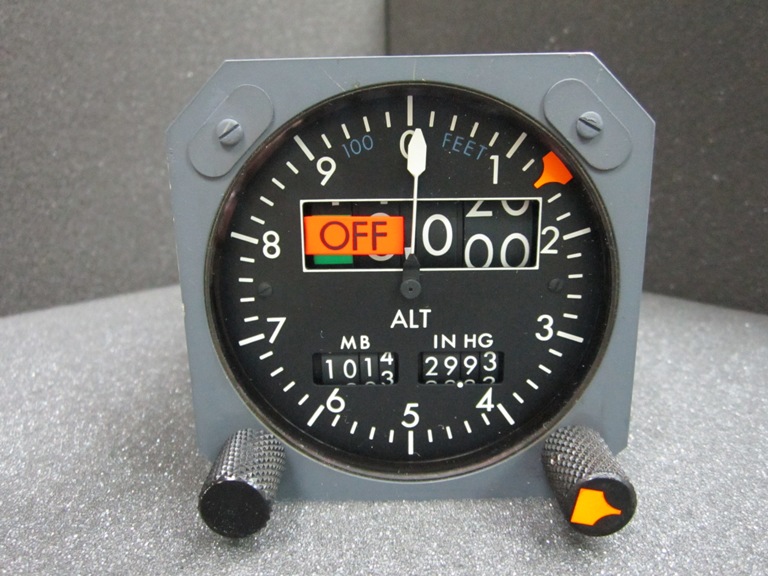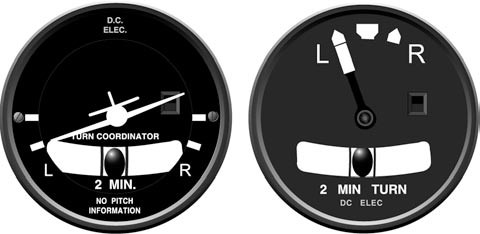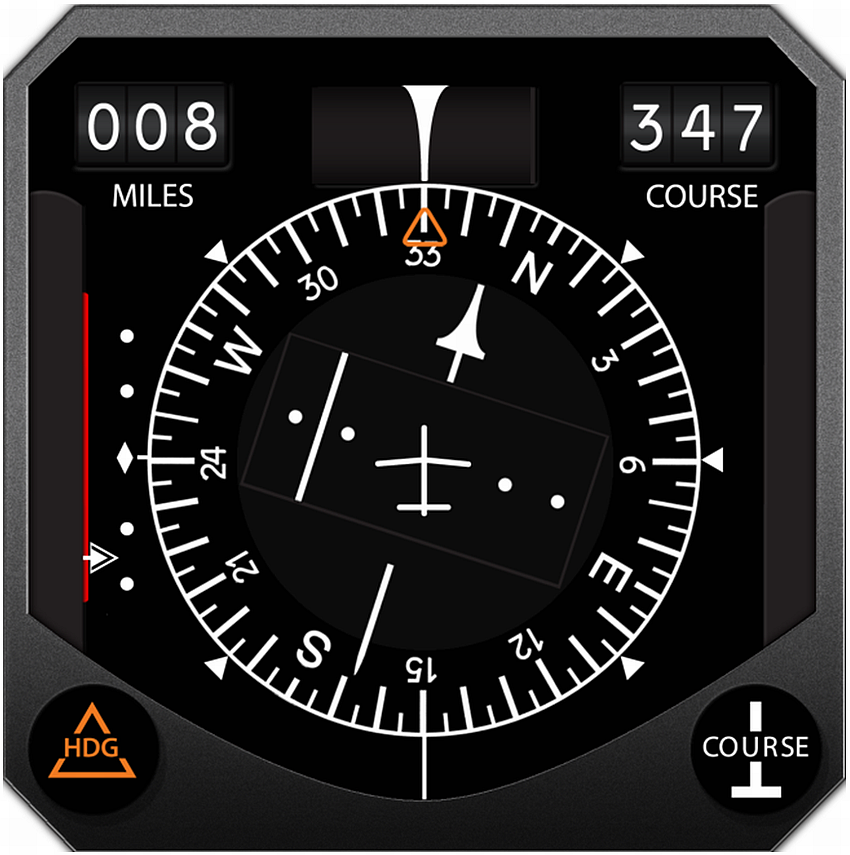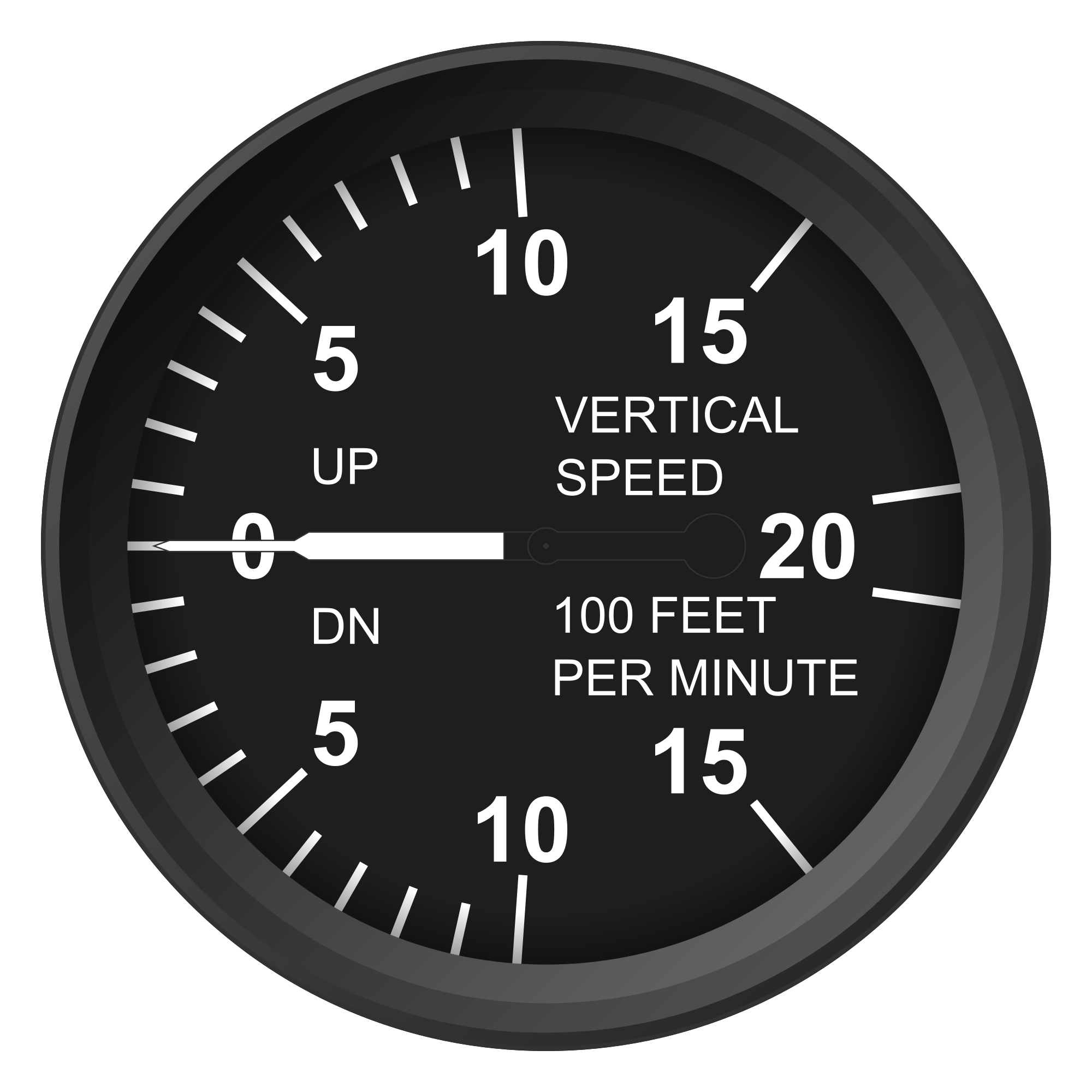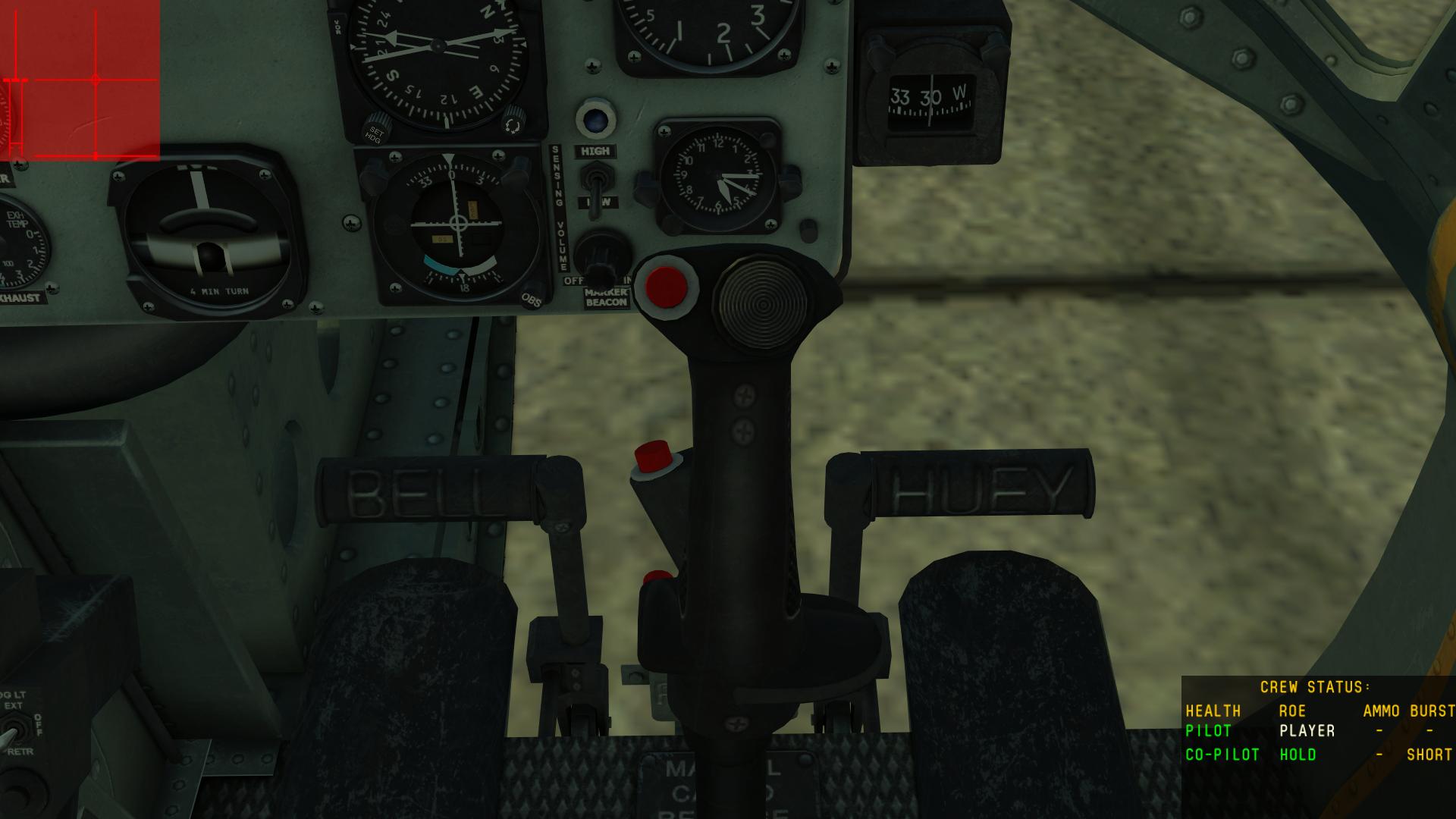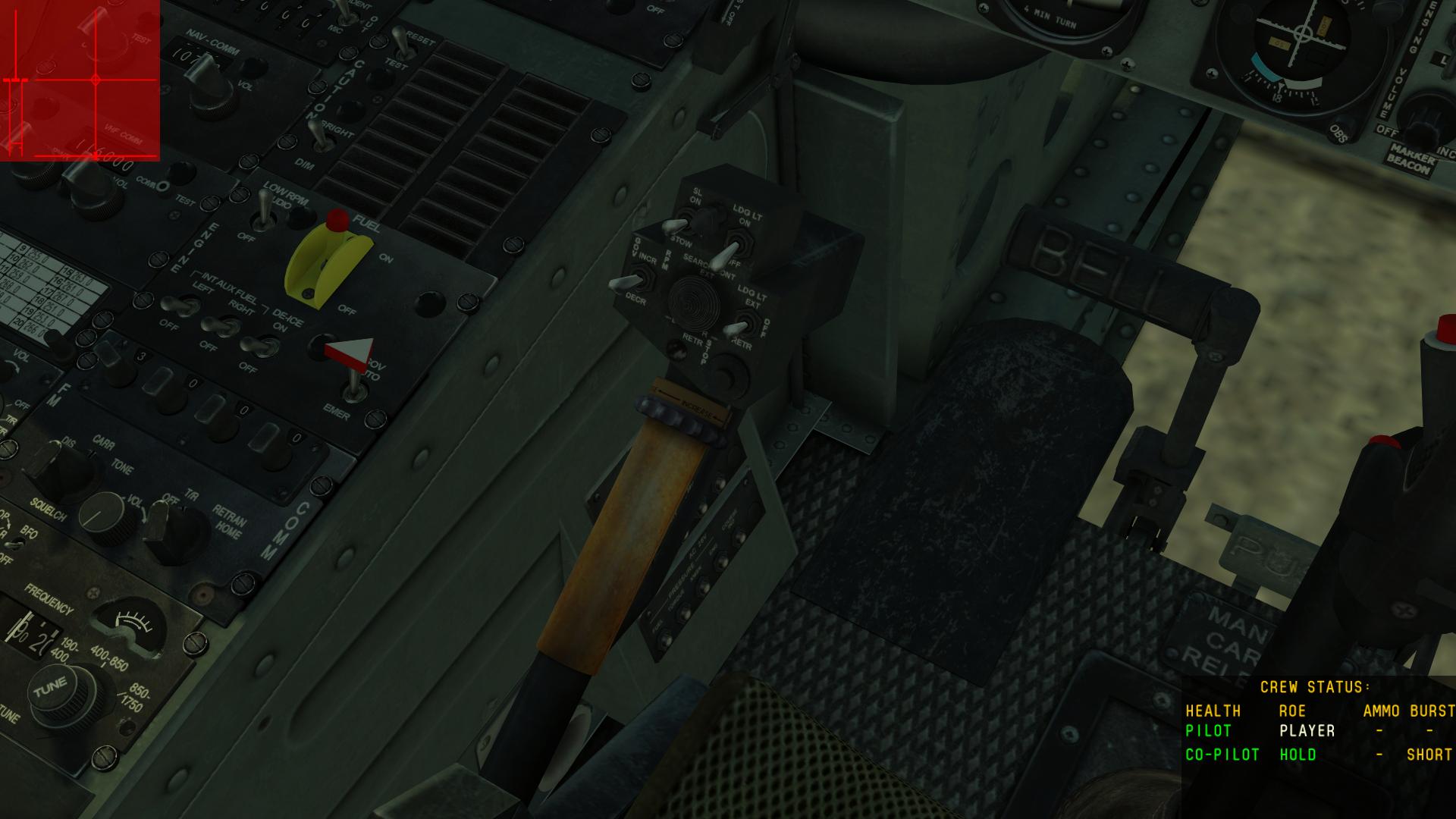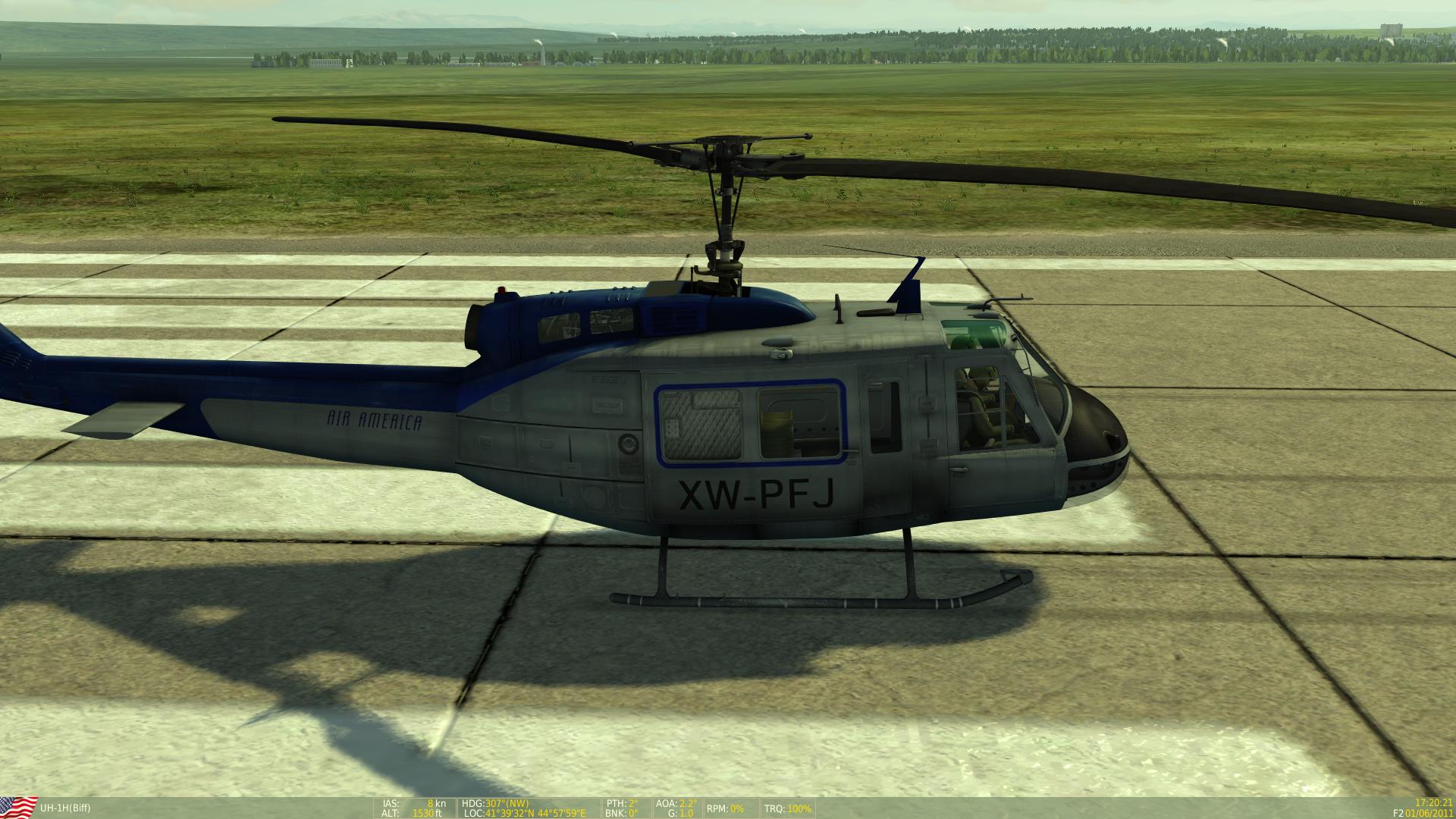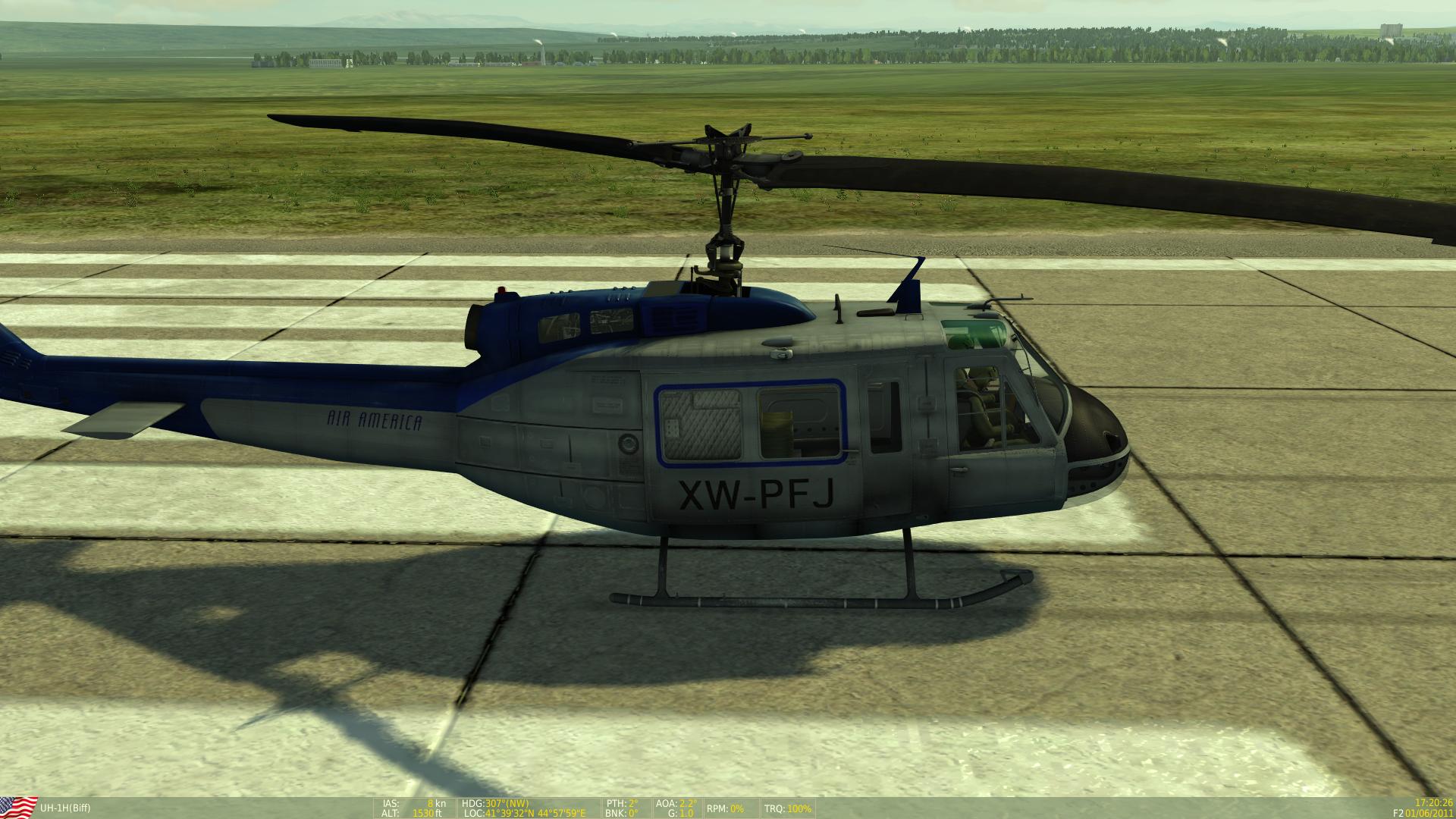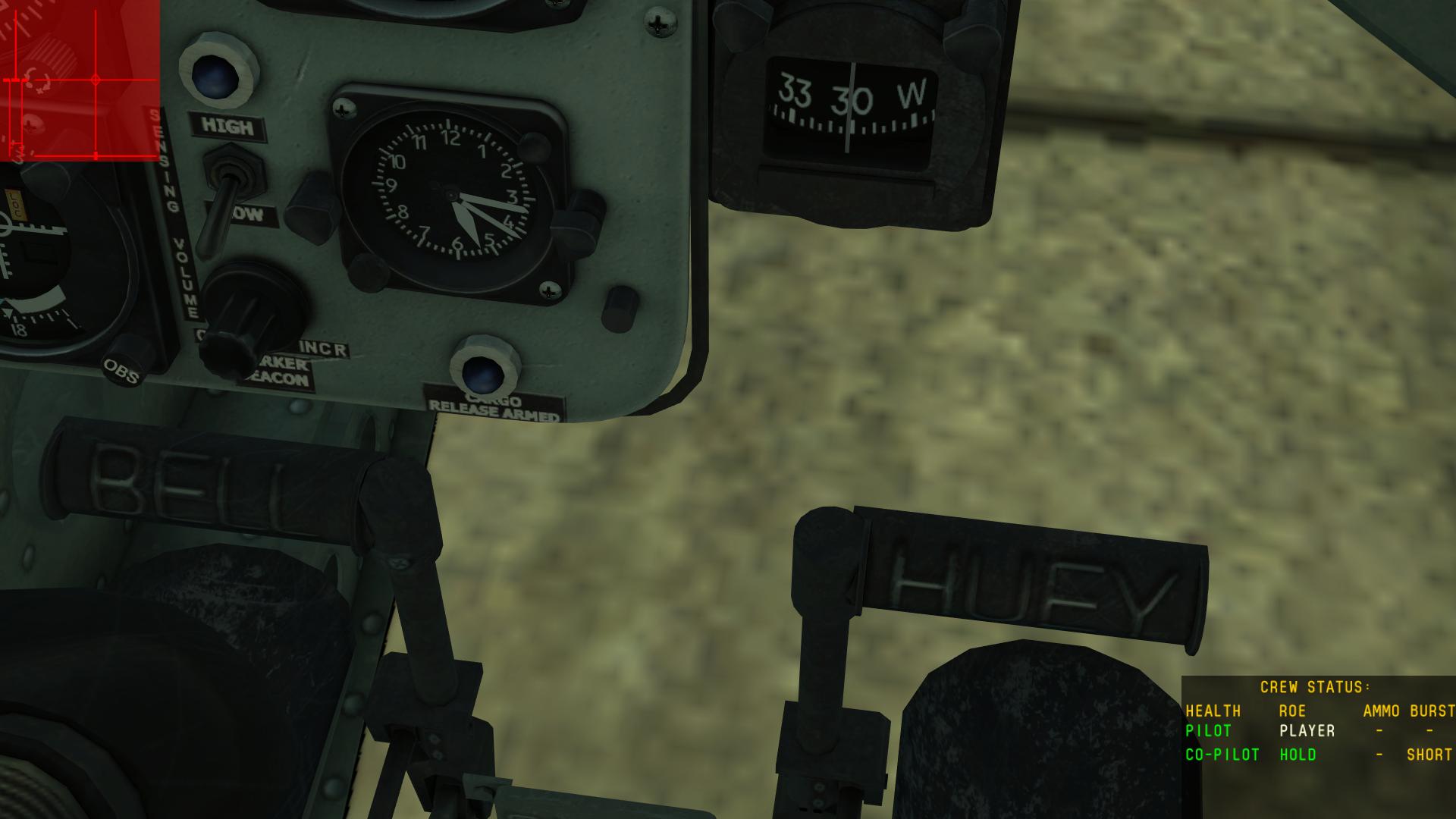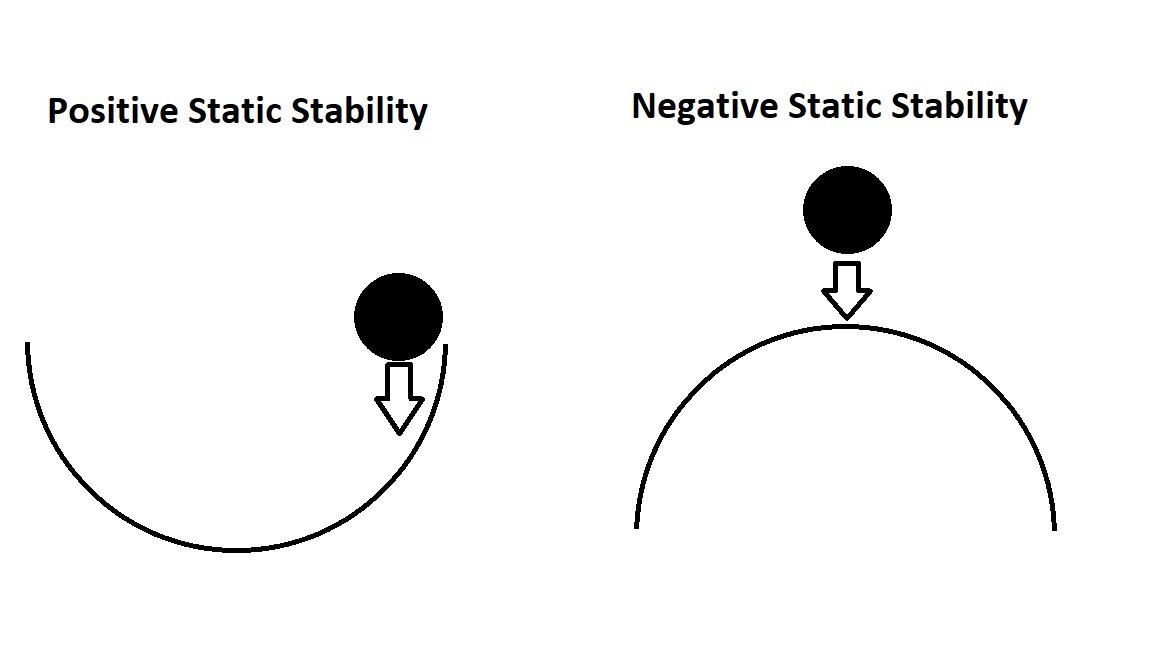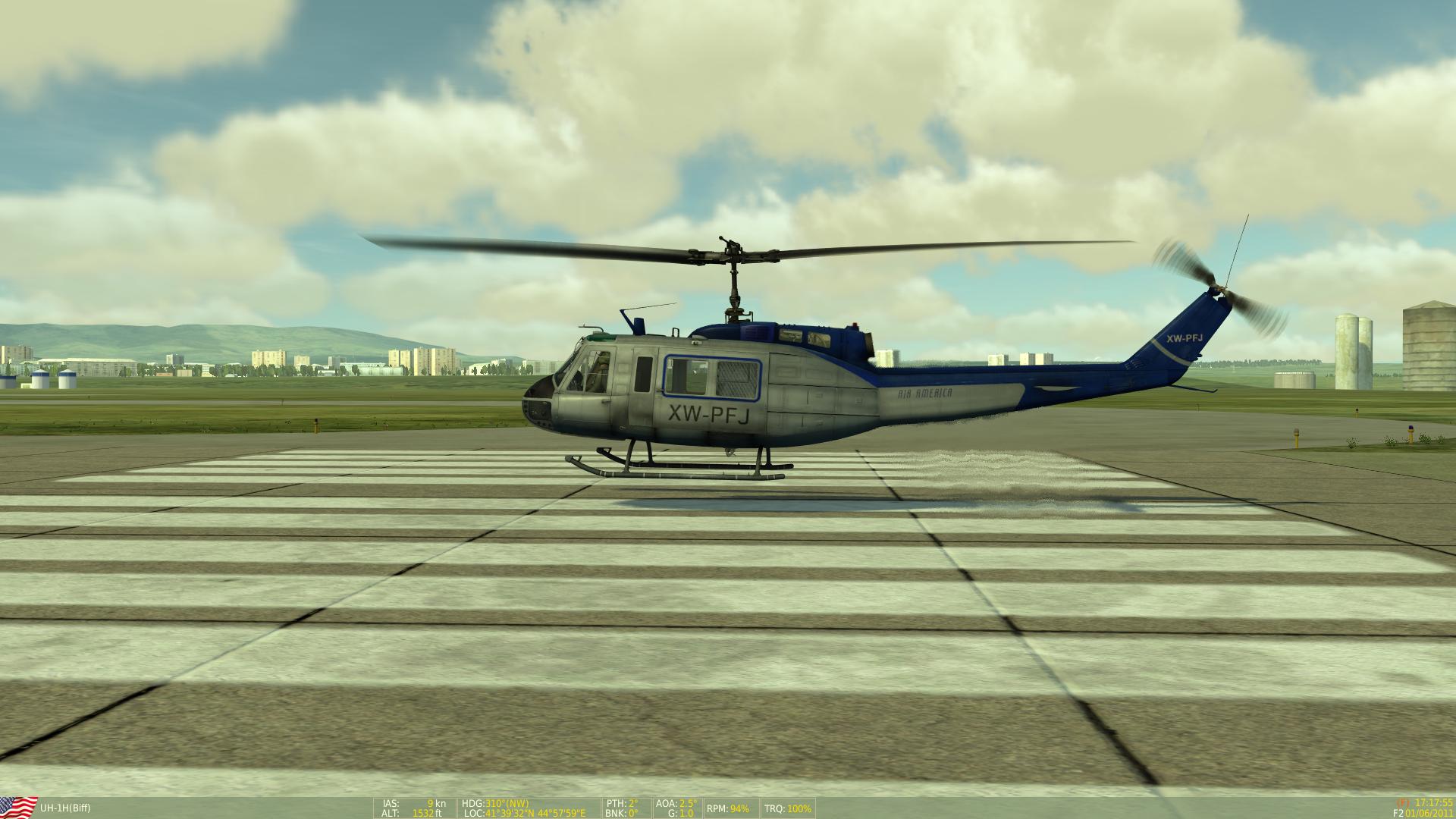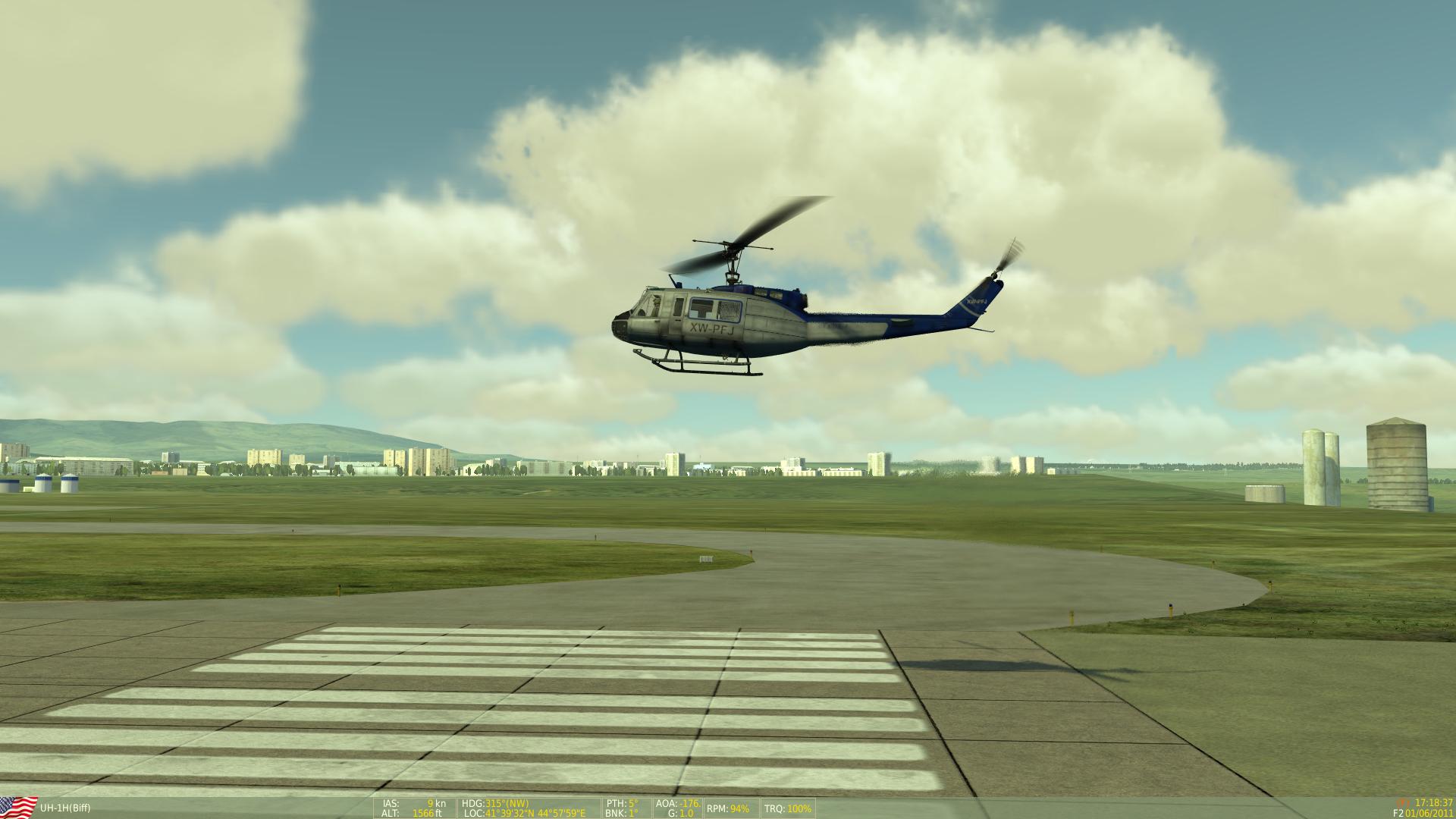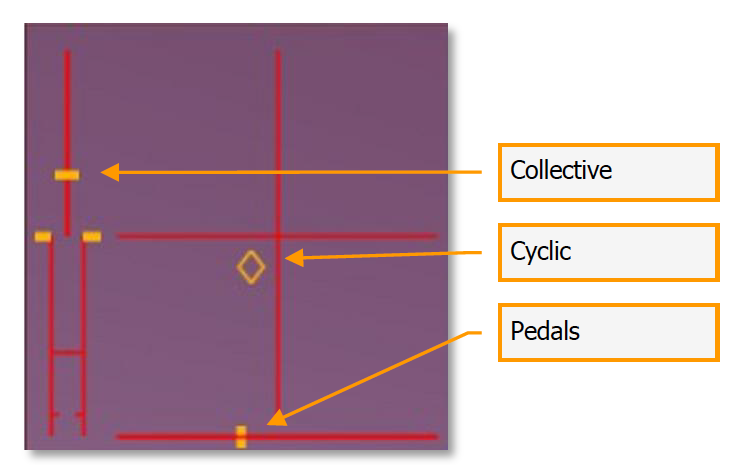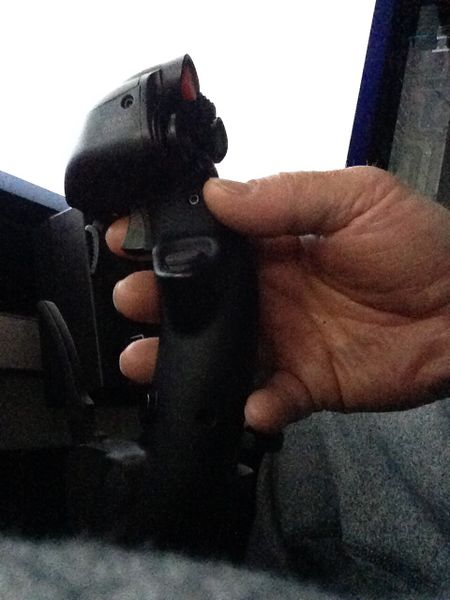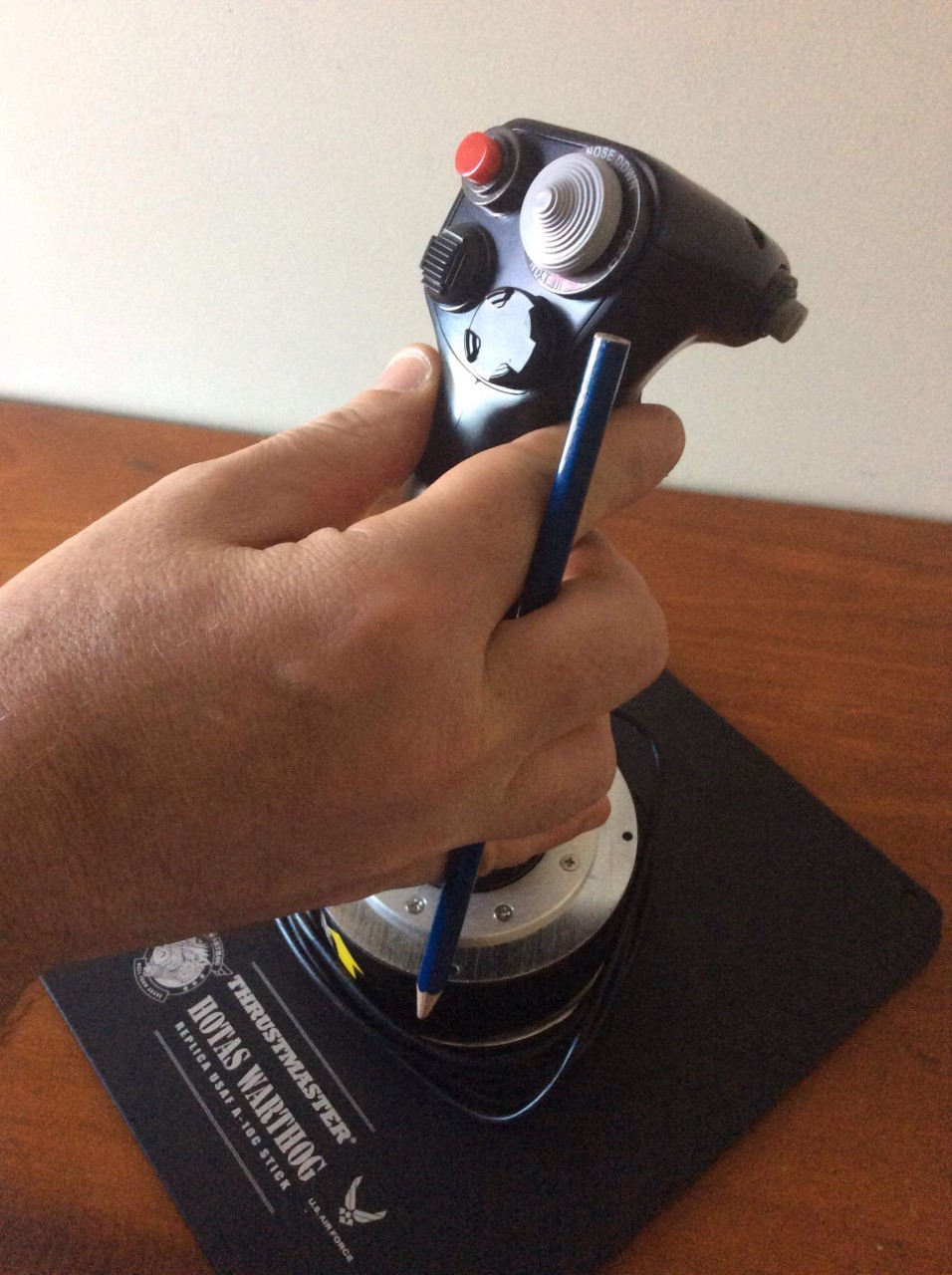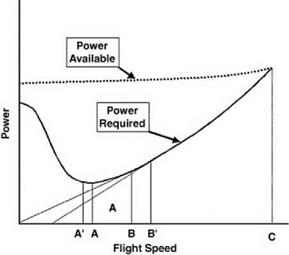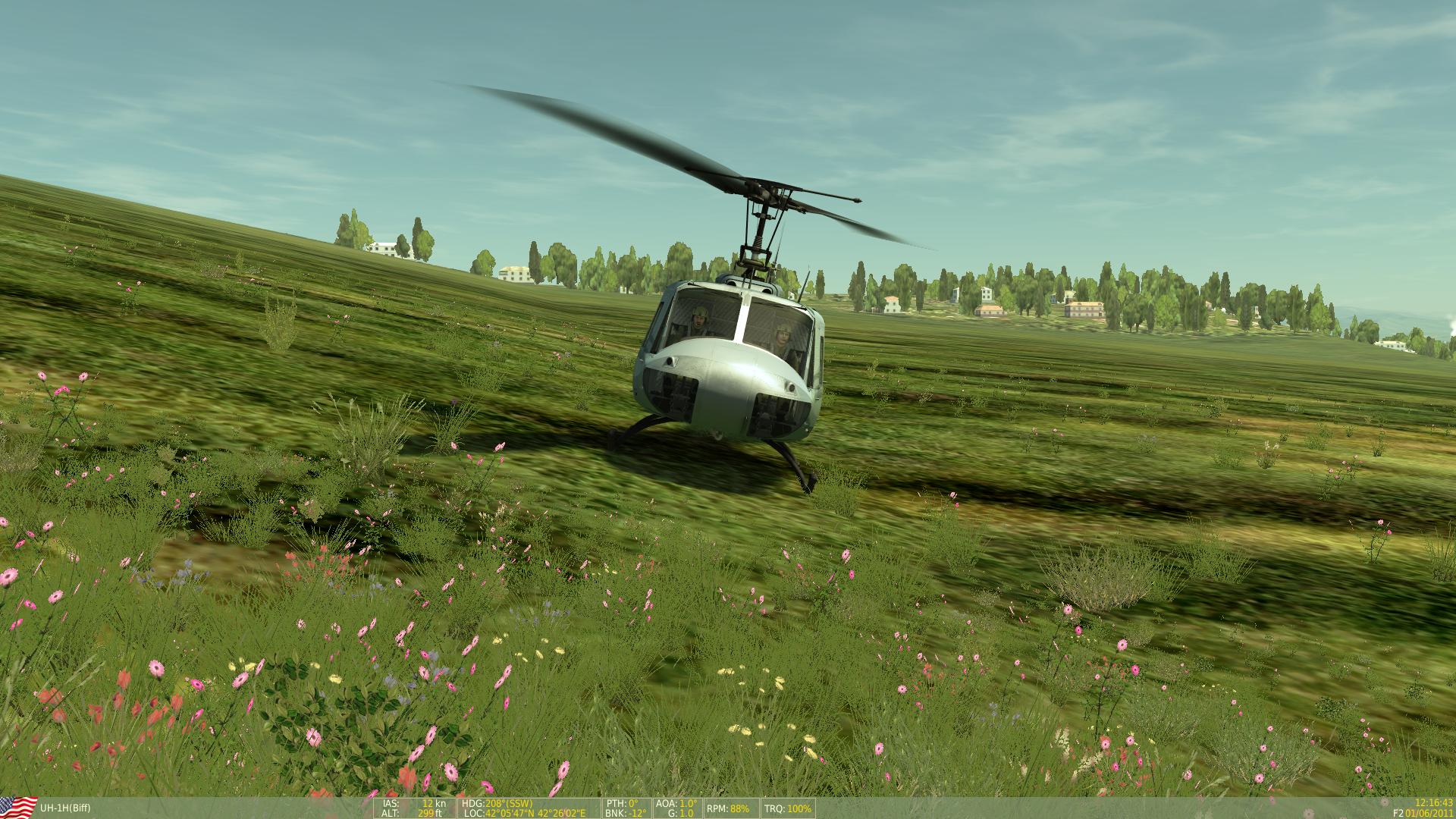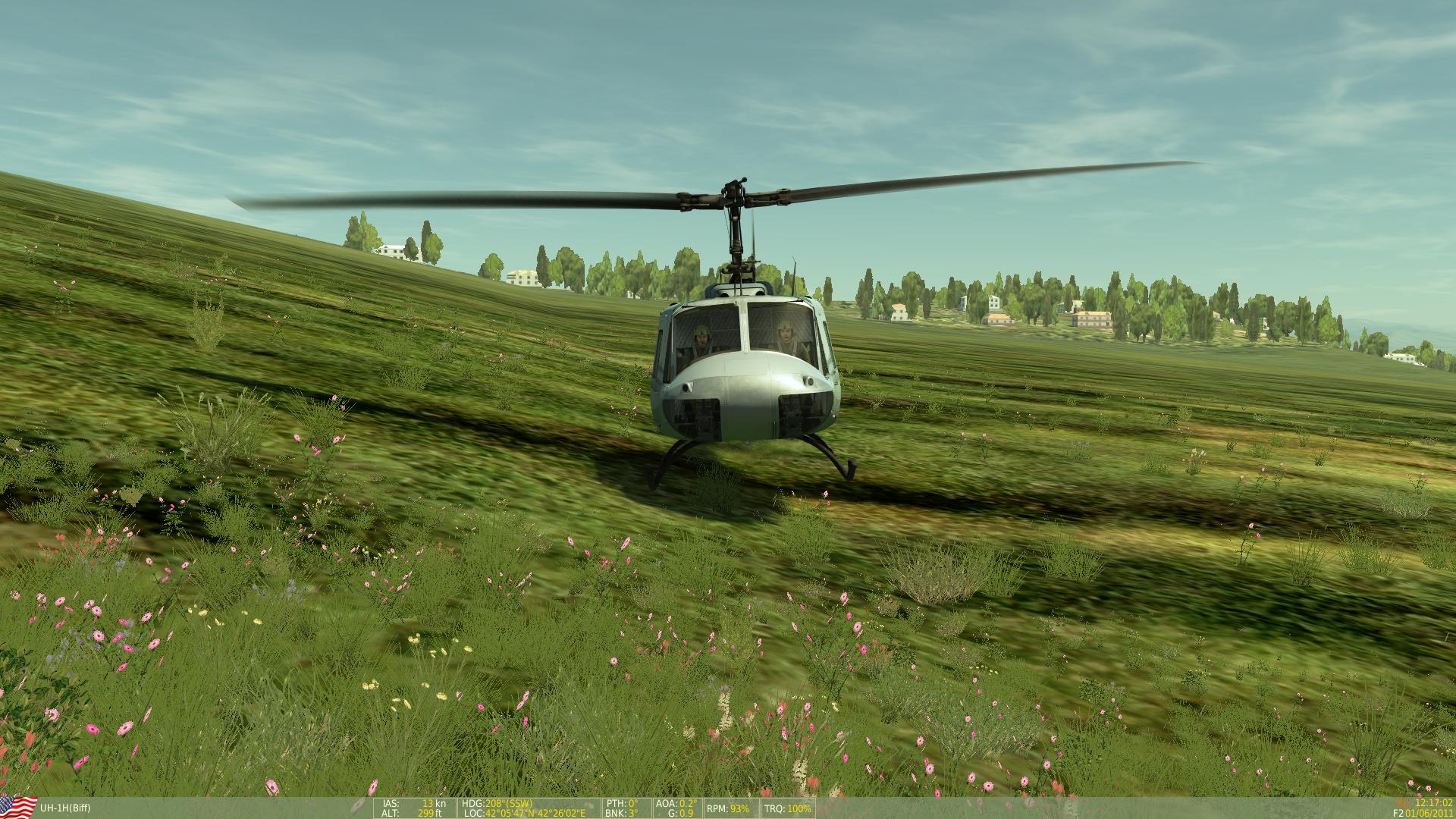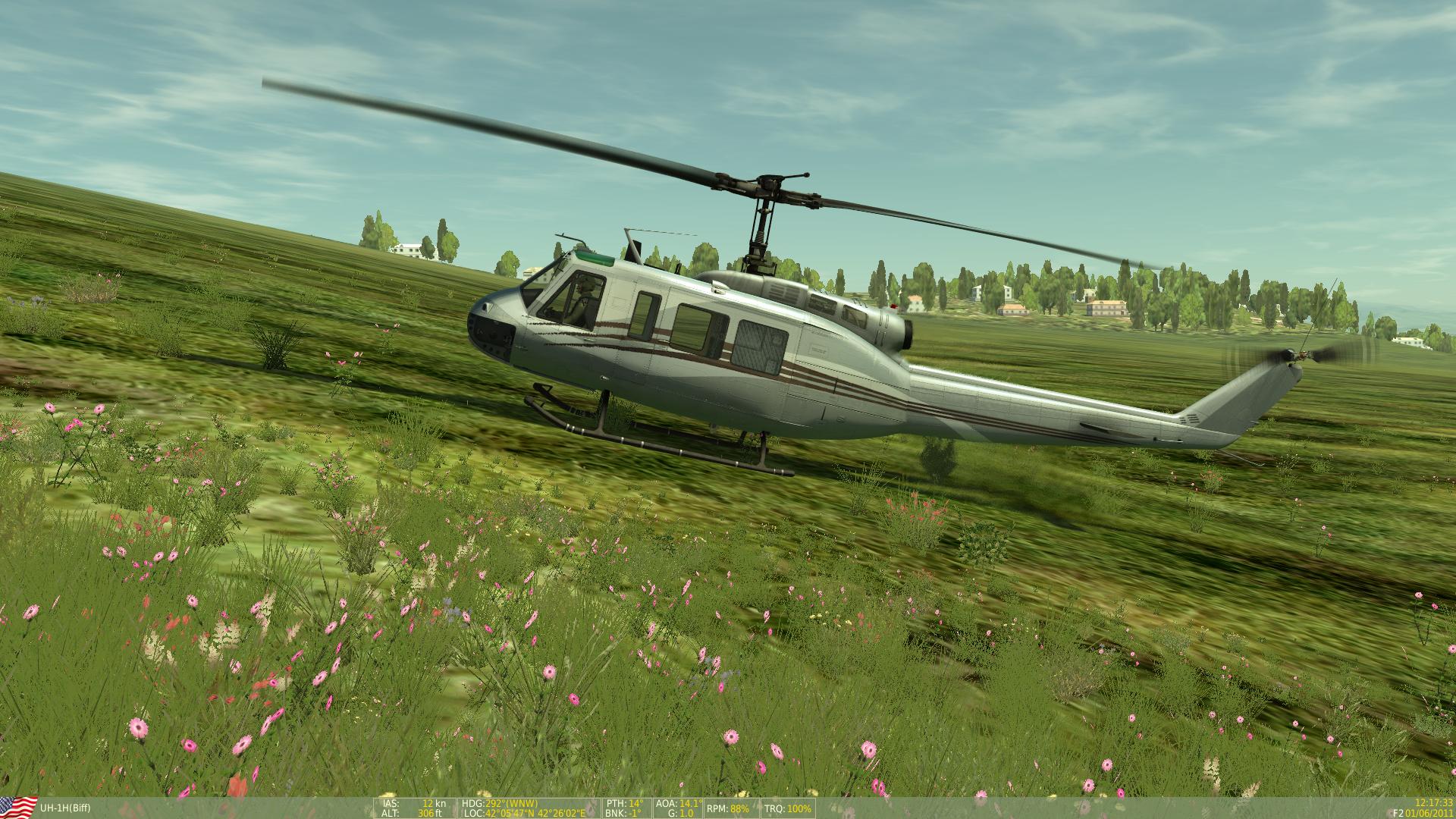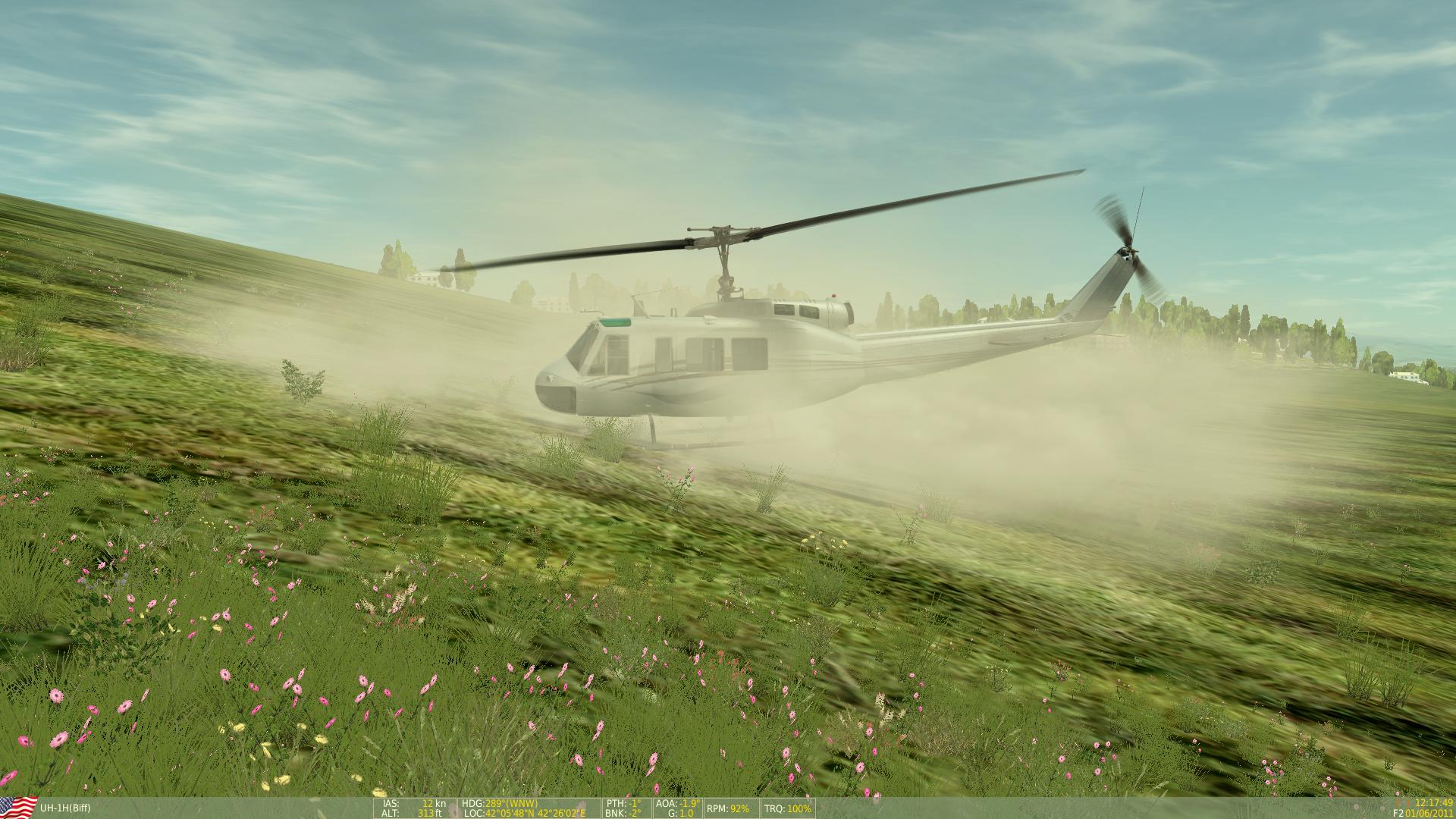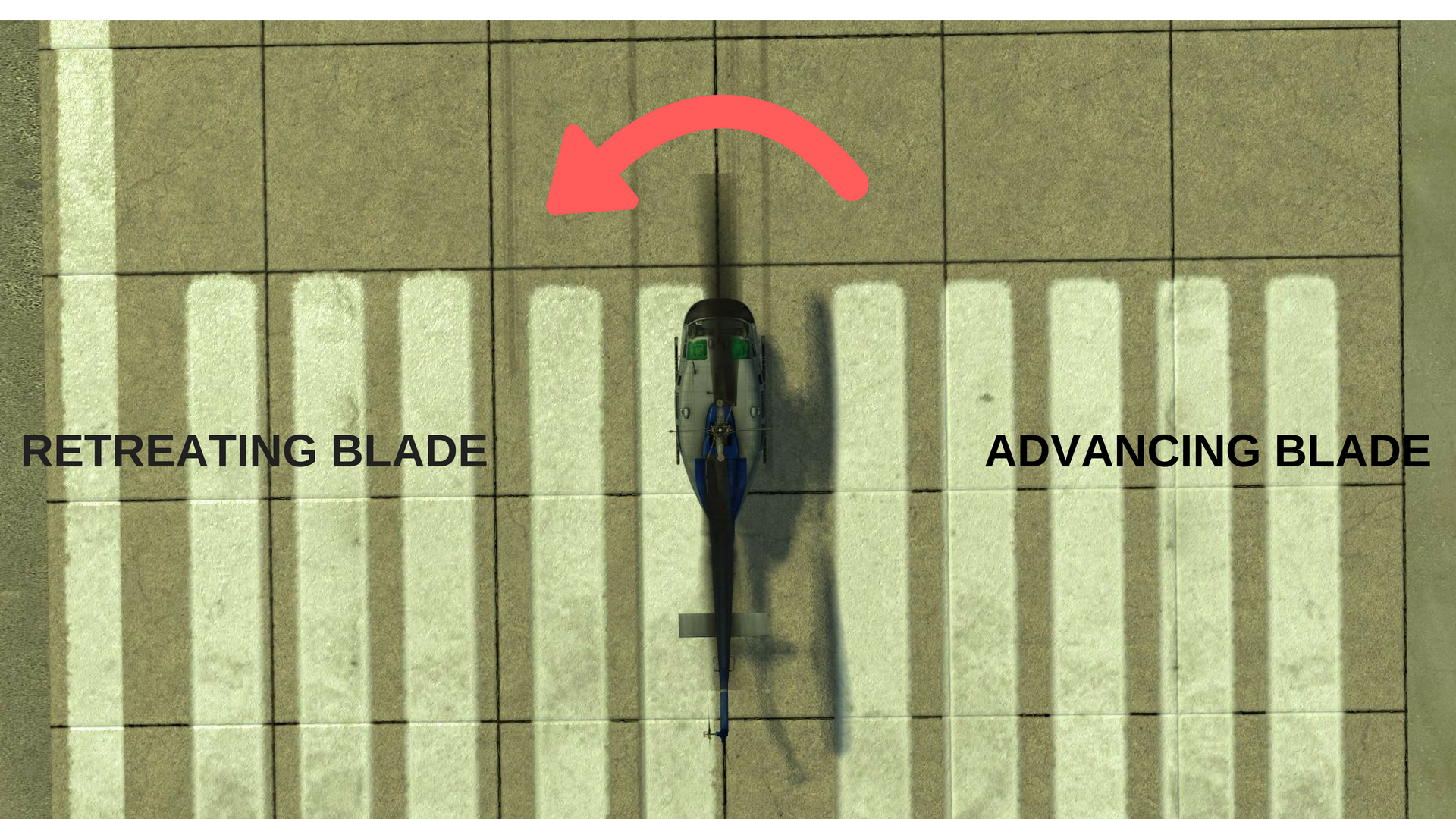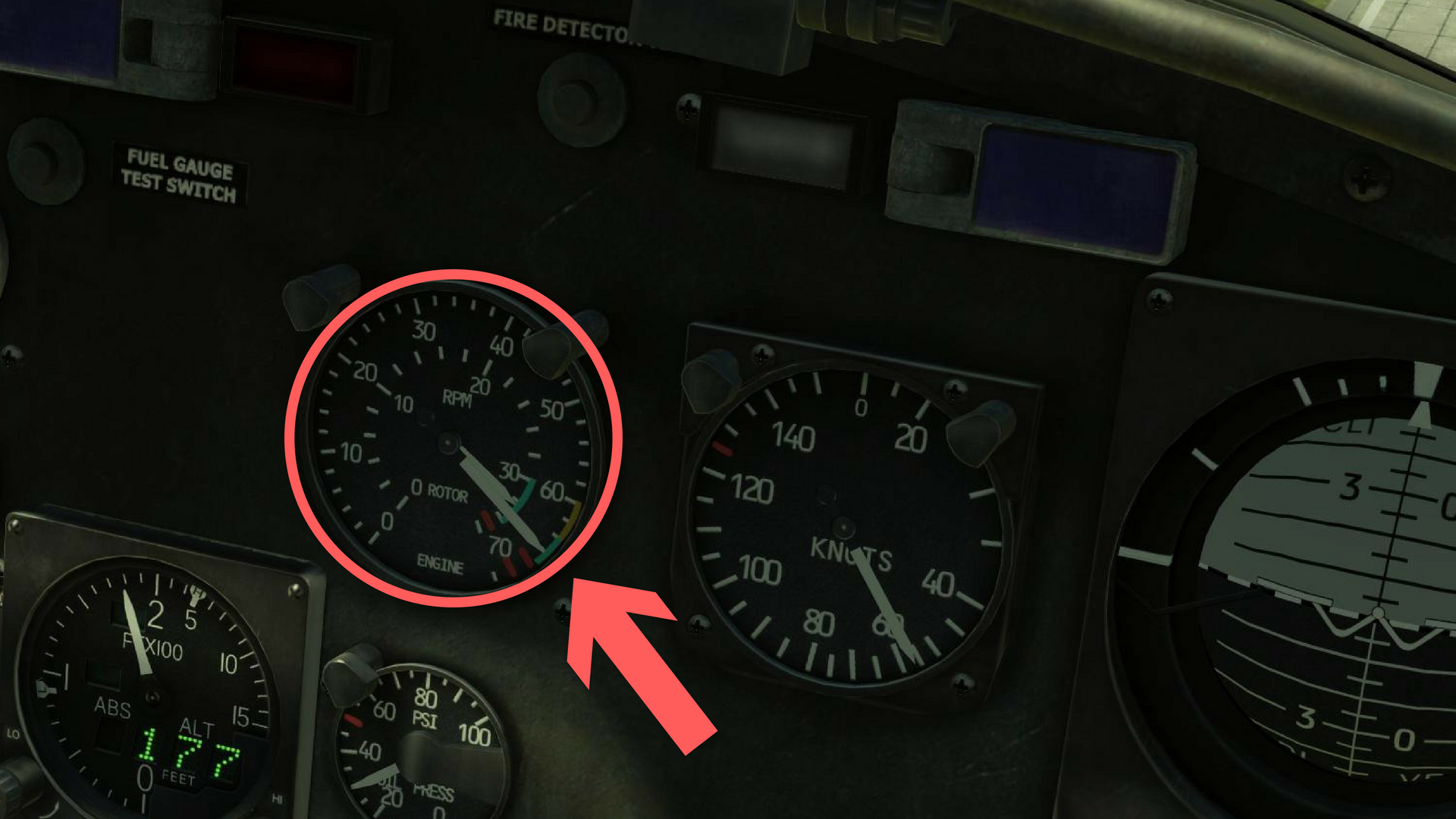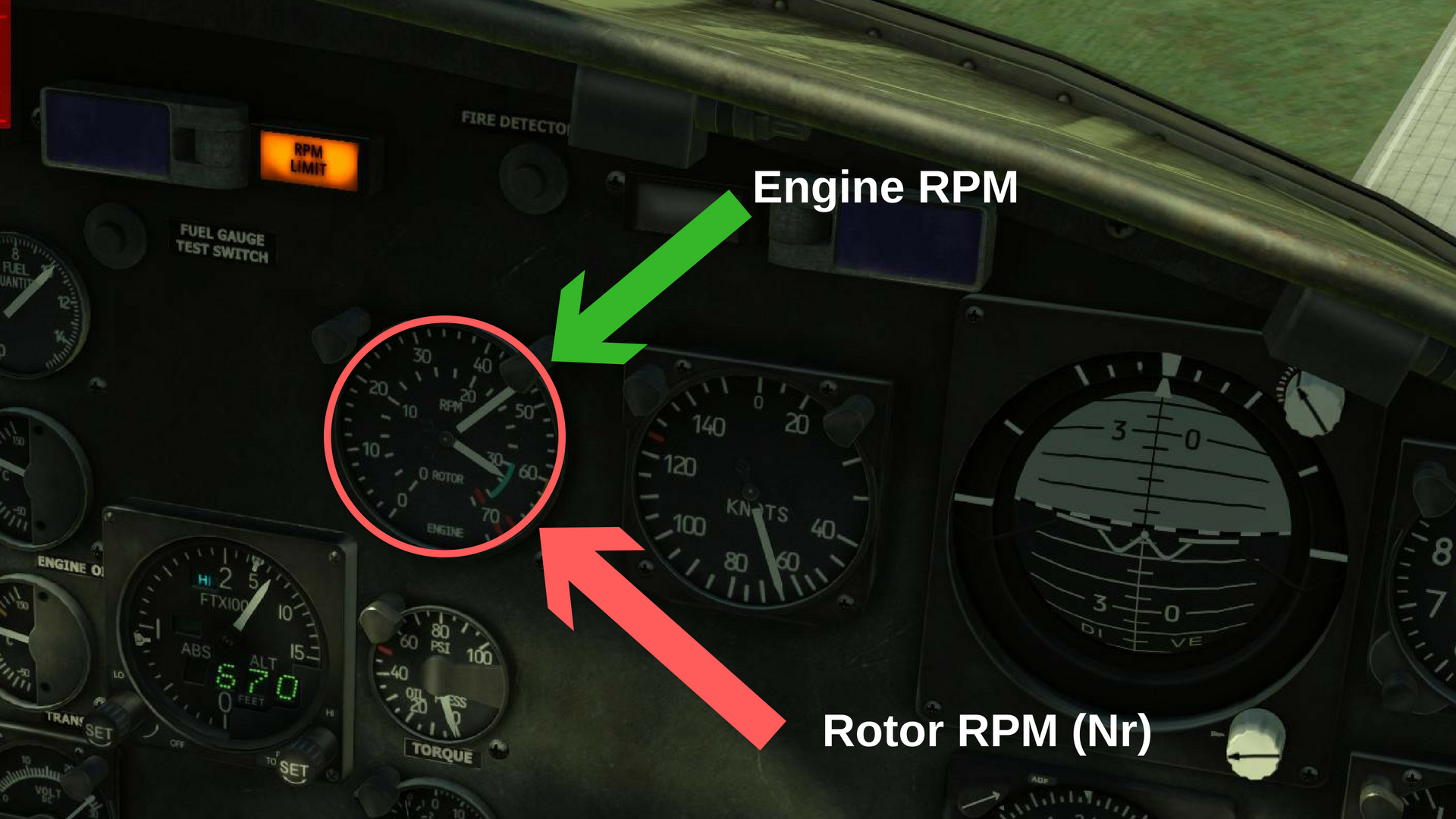Difference between revisions of "Basic Airmanship"
(→[5] Heading / Horizontal Situation Indicator (HSI)) |
m (→Basic Wings – Perform hovering flight.) |
||
| (10 intermediate revisions by 2 users not shown) | |||
| Line 7: | Line 7: | ||
}}</center> | }}</center> | ||
| − | The [https://www.faa.gov/regulations_policies/handbooks_manuals/aviation/airplane_handbook/ Airplane Flying Handbook] published in 2016, and revised in 2017 by the FAA defines Airmanship as, "a broad term that includes a sound knowledge of and experience with the principles of flight, the knowledge, experience, and ability to operate an airplane with competence and precision both on the ground and in the air, and the application of sound judgment that results in optimal operational safety and efficiency." While DCS is a simulation, the accuracy of the flight model means an understanding of aerodynamics and the skills and techniques that make a good airman can be beneficial in helping many beginner sim-pilots over the initial hump. This guide covers the basics of powered, fixed-winged flight, the basic maneuvers that all pilots should know, and a brief introduction to situational awareness and safety. | + | The [https://www.faa.gov/regulations_policies/handbooks_manuals/aviation/airplane_handbook/ Airplane Flying Handbook] published in 2016, and revised in 2017 by the FAA defines Airmanship as, "a broad term that includes a sound knowledge of and experience with the principles of flight, the knowledge, experience, and ability to operate an airplane with competence and precision both on the ground and in the air, and the application of sound judgment that results in optimal operational safety and efficiency." |
| + | |||
| + | While DCS is a simulation, the accuracy of the flight model means an understanding of aerodynamics and the skills and techniques that make a good airman can be beneficial in helping many beginner sim-pilots over the initial hump. This guide covers the basics of powered, fixed-winged flight, the basic maneuvers that all pilots should know, and a brief introduction to situational awareness and safety. | ||
<div class="alert alert-danger" role="alert"><strong>Please Note!</strong> While much of the information in this section is correct both in DCS and in real life, you <strong>should not</strong> use it as a source for studying for a Private Pilot's License or any other real-world flight certification. For that, use sources of information approved by your nation's aviation authority. (The FAA in the US, EASA in the EU or CAA in the UK.)</div> | <div class="alert alert-danger" role="alert"><strong>Please Note!</strong> While much of the information in this section is correct both in DCS and in real life, you <strong>should not</strong> use it as a source for studying for a Private Pilot's License or any other real-world flight certification. For that, use sources of information approved by your nation's aviation authority. (The FAA in the US, EASA in the EU or CAA in the UK.)</div> | ||
| Line 22: | Line 24: | ||
==== Thrust ==== | ==== Thrust ==== | ||
| − | Forward thrust is generated by the engine of the aircraft, either by the blades of a propeller or by the hot air pushed out the back of a jet engine. Thrust is a function of Newton's Third Law of Motion which explains that every action has an equal and opposite reaction. In the case of jet engines, the hot air produced by the jet engine rushes out the nozzle creating motion in the opposite direction, (and thus pushing the jet) forward | + | Forward thrust is generated by the engine of the aircraft, either by the blades of a propeller or by the hot air pushed out the back of a jet engine. Thrust is a function of Newton's Third Law of Motion which explains that every action has an equal and opposite reaction. In the case of jet engines, the hot air produced by the jet engine rushes out the nozzle creating motion in the opposite direction, (and thus pushing the jet) forward (propellers generated thrust by pushing / pulling air). |
| − | |||
| − | |||
| + | The thrust generated by the engine only needs to be able to overcome the drag, or aerodynamic friction, of the aircraft for you to start flying. Of course, the more thrust produced gives you a higher speed, but for to go faster you could also eliminate drag. | ||
==== Lift ==== | ==== Lift ==== | ||
| Line 49: | Line 50: | ||
As an aircraft moves through the air, the air resists the motion of the aircraft in a force called drag. This force is directed along and opposed to the direction of flight. The shape of the aircraft, the viscosity of the air, and the velocity of an aircraft all contribute to the amount of drag encountered during flight. | As an aircraft moves through the air, the air resists the motion of the aircraft in a force called drag. This force is directed along and opposed to the direction of flight. The shape of the aircraft, the viscosity of the air, and the velocity of an aircraft all contribute to the amount of drag encountered during flight. | ||
| − | As an example: A clean F-15C is capable of Mach 2.5 in full afterburner, but only at high altitudes, typically above 35,000 feet. This is due to the viscosity of the air. As the air gets thinner, there is less drag pushing against the aircraft. At low altitudes, a clean F-15C is only capable of Mach 1.2 max. In other words, if you need to go fast, 'remove drag (by going to a higher altitude or dumping stores / fuel, for example). | + | As an example: A clean F-15C is capable of pushing Mach 2.5 in full afterburner, but only at high altitudes, typically above 35,000 feet. This is due to the viscosity of the air. As the air gets thinner, there is less drag pushing against the aircraft. At low altitudes, a clean F-15C is only capable of Mach 1.2 max. In other words, if you need to go fast, 'remove drag (by going to a higher altitude or dumping stores / fuel, for example). |
| Line 59: | Line 60: | ||
|height = 90px | |height = 90px | ||
}}</center> | }}</center> | ||
| − | |||
==== Weight (Gravity) ==== | ==== Weight (Gravity) ==== | ||
| Line 196: | Line 196: | ||
This HSI is also equipped with a course deviation display indicator, which is the broken up arrow in the center (around the airplane heading symbology). The HSI can be set like the heading indicator to be used for longer range desired heading tracking, but typically it is controlled by selected a desired waypoint or electronic ground station (such as a runway with a landing system) that it will then point to. Rather than only displaying heading information, this bar can move (as evident by the dotted icons) and can thus also display if the position of the aircraft is off from the selected course. This makes it ideal for navigating to the aformentioned ground stations, especially in bad weather or visibility. Our HSI shown also displays the range to this selected (way)point / station. | This HSI is also equipped with a course deviation display indicator, which is the broken up arrow in the center (around the airplane heading symbology). The HSI can be set like the heading indicator to be used for longer range desired heading tracking, but typically it is controlled by selected a desired waypoint or electronic ground station (such as a runway with a landing system) that it will then point to. Rather than only displaying heading information, this bar can move (as evident by the dotted icons) and can thus also display if the position of the aircraft is off from the selected course. This makes it ideal for navigating to the aformentioned ground stations, especially in bad weather or visibility. Our HSI shown also displays the range to this selected (way)point / station. | ||
| + | |||
==== [6] Vertical Velocity Indicator (VVI) ==== | ==== [6] Vertical Velocity Indicator (VVI) ==== | ||
| Line 202: | Line 203: | ||
The VVI also proves its worth on takeoff and landing legs, as it is then even more crucial to closely monitor the vertical velocity to ensure that you are respectively having a proper climb out after takeoff whilst attaining enough altitude or to ensure that you do not smack the aircraft into the runway (as most aircraft can not handle such stress / forces), but instead flare before touchdown: reducing the vertical velocity to almost 0 when touching down to avoid breaking the landing gear or the aircraft. | The VVI also proves its worth on takeoff and landing legs, as it is then even more crucial to closely monitor the vertical velocity to ensure that you are respectively having a proper climb out after takeoff whilst attaining enough altitude or to ensure that you do not smack the aircraft into the runway (as most aircraft can not handle such stress / forces), but instead flare before touchdown: reducing the vertical velocity to almost 0 when touching down to avoid breaking the landing gear or the aircraft. | ||
| − | |||
| − | |||
| − | |||
=== Energy === | === Energy === | ||
| Line 324: | Line 322: | ||
[[File:Hover OGE.jpg|thumb|center|OGE Hover]] | [[File:Hover OGE.jpg|thumb|center|OGE Hover]] | ||
| + | |||
| + | |||
| + | When learning to fly rotary-wing aircraft your flight instructor will slowly introduce you to the primary and secondary effects of aircraft | ||
| + | controls. Learning to anticipate these secondary effects is key to your advancement. | ||
| + | |||
| + | As your proficiency increases and your skill set improves, you will get lower and slower in the various maneouvers you are practicing. | ||
| + | |||
| + | Normally around the 15 hour mark of flight training & numerous hours of ground school/rotary-wing theory, you are then introduced to | ||
| + | hovering. | ||
| + | |||
| + | Most acquire the art of hovering around the 20-25 hour mark. There's no hidden secret, it just 'happens'.... eventually. | ||
| + | |||
| + | Contrary to the aforementioned, most DCS helo first timers self flagellate by taking on hovering as their first task. This is OK cuz you're | ||
| + | not paying by the hour in your sim. | ||
| + | |||
| + | Just prepare to be humbled. | ||
| + | |||
| + | You won't believe this as you're bouncing all over the place, but the moment that switch is flicked and you suddenly begin hovering | ||
| + | effortlessly will likely be your most memorable experience in DCS simming. | ||
| + | |||
| + | |||
| + | |||
| + | '''Basic Wings requirement:''' ''- PERFORM HOVERING FLIGHT'' | ||
| + | |||
| + | |||
| + | ===Basic Wings – Perform hovering flight.=== | ||
| + | ====Objective: Perform hovering flight==== | ||
| + | =====Competencies expected: The pilot will demonstrate bringing his craft to a stationary hover in ground effect, for 1 minute===== | ||
| + | |||
| + | '''Hovering the Huey in DCS:''' | ||
| + | |||
| + | Perform startup and check that the immediate area is clear (above & behind). | ||
| + | |||
| + | *Set Cyclic trim slightly left & aft. Preposition Left Pedal approximately 30-40% range depending on Gross Wgt and environmental conditions. (see diagram) | ||
| + | |||
| + | [[File:huey_trim.png|400px]] | ||
| + | |||
| + | *Pick an easily identifiable reference spot (tree, building, road edge) in the distance to your front and keep your focus on it. The further away your focus point the better. | ||
| + | *Increase collective SLOWLY until the aircraft is light on the skids | ||
| + | *'Feel out' the cyclic to find the sweet spot where the helicopter feels stable/stationary. | ||
| + | *More or less left pedal may be required as you increase collective '' | ||
| + | *Hovering in Ground Effect (HIGE) altitude for the Huey is below appox 50ft. Maintain 5ft (radar altimeter) for this exercise. | ||
| + | *Maintain your reference point on a fixed point on the windscreen to maintain the desired spatial orientation, Quick visual checks peripherally will help. | ||
| + | |||
| + | Note: you may find starting from the hover just too difficult, & that's not the way it's taught in real life, if you are struggling; | ||
| + | get yourself up & away from the ground as best you can, keep some moderate speed on the nose ~50<60kts, | ||
| + | now begin to slow yourself down a little, then a little more & more again, to the point where you are at a walking pace. | ||
| + | (VR really is worth its weight in gold in Rotary-Wing sim flying...) | ||
| + | Eventually you will get to the point where you are standing still, hovering. | ||
| + | You cannot remain stationary without continuous inputs to all the controls, but these are all very subtle & minute | ||
| + | - so dont go stirring the cauldron trying to get the helo to behave, you're basically swinging a cat around the room. | ||
| + | |||
| + | {| class="wikitable" | ||
| + | |- | ||
| + | |style="padding: 10px" align="center" | [[File:pinky_grip.jpg|200px]] | ||
| + | | Many will attest that the secret to taming the hovering Huey lies in the fingertips. When the forearm is resting on something stable (your thigh if the cyclic is between your legs) the fingertips can impart<br> | ||
| + | almost imperceptibly small reciprocating movements to the grip. The pinky lock grip depicted here frees up the thumb to engage HOTAS buttons whilst maintaining a stable hover without compromising your grip .<br> | ||
| + | |||
| + | Some may have instinctively adopted this technique on their own. | ||
| + | |- | ||
| + | |style="padding: 10px" align="center" | [[File:pencil_grip.jpg|200px]] | ||
| + | | If you have difficulty softening your grip try practicing with a pencil between your fingers.<br> | ||
| + | |} | ||
| + | |||
| + | ===Suggested practise for mastering hovering:=== | ||
| + | |||
| + | ====a hovering turn around the masthead maintaining rate of turn==== | ||
| + | |||
| + | *Pickup into a stable hover | ||
| + | *Perform a 360 turn about the mast whilst maintaining a slow constant turn rate, as if you're keeping your nose on someone walking around your aircraft. | ||
| + | *You will initiate the turn with pedal input but immediate and constant reciprocating cyclic and collective inputs will be required. | ||
| + | *Maintain situational awareness of wind speed and direction. | ||
| + | *In DCS the wind will not impact Tail Rotor Effectiveness but the constantly changing force and direction of its Weather Vaning effect will necessitate frequent changes in pedal inputs. | ||
| + | *Severe fluctuations in pedal inputs may result in subtle changes in main rotor performance necessitating compensatory collective inputs to maintain altitude. | ||
| + | *The translational effects of the wind on the airframe require countering cyclic inputs. | ||
| + | |||
| + | A 360 turn about the mast is a common action prior to taxi/takeoff at busy airfields to check for other traffic | ||
| + | Hovering turns can also be made around any vertical axis; for example; | ||
| + | *about the nose | ||
| + | *about the mast | ||
| + | *about the tail of the aircraft, or | ||
| + | *a point in front of the aircraft. | ||
| + | These are more complicated and advanced maneouvres requiring highly co-ordinated control inputs, | ||
| + | especially with a higher wind component. | ||
| + | |||
| + | ====Lateral hovering flight.==== | ||
| + | |||
| + | *Lineup perpendicular to and with your nose on the Taxiway centerline. | ||
| + | *Establish a stable 5 foot hover. | ||
| + | *Initiate lateral flight with a slow steady cyclic movement in the desired direction. | ||
| + | *Be prepared to make immediate compensatory adjustments with pedal and collective. | ||
| + | *Maintain your attitude and alignment with the center line | ||
| + | *Maintain walking pace speed. | ||
| + | *The degree of pedal and cyclic input will vary with wind speed and direction as well as direction of flight. | ||
| + | |||
| + | |||
| + | ====Hover taxing from ramp to runway==== | ||
| + | |||
| + | *Pickup to a stable hover | ||
| + | *Perform a 360 turn about the mast to check for other traffic. | ||
| + | *Lineup on taxiway or apron taxi guideline | ||
| + | *Initiate flight with forward cyclic. | ||
| + | *Maintain Heading and Altitude with prompt but subtle pedal and collective inputs. | ||
| + | *Maintain a walking pace. | ||
| + | |||
| + | |||
| + | ====Air taxi flight below 100’ at a safe airspeed for the altitude and conditions==== | ||
| + | |||
| + | *Ground Taxi: On wheels | ||
| + | *Hover Taxi: 3 - 5 feet | ||
| + | *Air Taxi: 20 - 100 feet | ||
| + | |||
| + | *Air taxi is the preferred method for ground movements on airports. | ||
| + | |||
| + | *Pilots are expected to remain below 100 feet above ground level (AGL). If a higher than normal airspeed or altitude is desired, the request should be made prior to lift-off. | ||
=== Effective Translational Lift (ETL) === | === Effective Translational Lift (ETL) === | ||
Latest revision as of 05:56, 20 May 2021
The Airplane Flying Handbook published in 2016, and revised in 2017 by the FAA defines Airmanship as, "a broad term that includes a sound knowledge of and experience with the principles of flight, the knowledge, experience, and ability to operate an airplane with competence and precision both on the ground and in the air, and the application of sound judgment that results in optimal operational safety and efficiency."
While DCS is a simulation, the accuracy of the flight model means an understanding of aerodynamics and the skills and techniques that make a good airman can be beneficial in helping many beginner sim-pilots over the initial hump. This guide covers the basics of powered, fixed-winged flight, the basic maneuvers that all pilots should know, and a brief introduction to situational awareness and safety.
Contents
- 1 Fundementals of Flight
- 2 Basic Maneuvers
- 3 Situational Awareness & Safety
- 4 What's Next?
- 5 Rotary Flight
- 5.1 Basic Principles
- 5.2 Helicopter Stability
- 5.3 Hovering
- 5.4 Basic Wings – Perform hovering flight.
- 5.5 Suggested practise for mastering hovering:
- 5.6 Effective Translational Lift (ETL)
- 5.7 Helicopter Power Curve
- 5.8 Approach and Landing
- 5.9 Gyroscopic Precession/Phase Lag
- 5.10 Control Interaction
- 5.11 Rotary Phenomena
Fundementals of Flight
The Four Forces
There are four basic forces that are relevant to flight with heavier than air aircraft. Rotorcraft, such as helicopters, and VSTOL aircraft are also affected by these same four basic forces, but for simplicity and clarity, this section provides details for fixed-wing aircraft only.
Thrust
Forward thrust is generated by the engine of the aircraft, either by the blades of a propeller or by the hot air pushed out the back of a jet engine. Thrust is a function of Newton's Third Law of Motion which explains that every action has an equal and opposite reaction. In the case of jet engines, the hot air produced by the jet engine rushes out the nozzle creating motion in the opposite direction, (and thus pushing the jet) forward (propellers generated thrust by pushing / pulling air).
The thrust generated by the engine only needs to be able to overcome the drag, or aerodynamic friction, of the aircraft for you to start flying. Of course, the more thrust produced gives you a higher speed, but for to go faster you could also eliminate drag.
Lift
Lift is the component of the aerodynamic force that is perpendicular to the flow direction. This force results when the airfoil of the wing causes the surrounding air to be deflected. Again due to Newton's Third Law, this deflection causes a force in the opposite direction, generally upwards opposing gravity.
Aerodynamic lift can be in almost any direction and must simply overcome the weight of the aircraft. During straight and level flight, the lift opposes gravity, but during ascent and descent or during banking, lift occurs at an angle.
Angle of Attack
An important aspect of lift is the angle of attack (AoA, or α), or the angle of between the chord line of an airfoil and the oncoming air. Increases in the angle of attack will result in more lift as the air is deflected through a larger angle and thus the airstream velocity increases up until the critical angle of attack.
The critical angle of attack is the angle of attack which produces the maximum amount of lift. Beyond the critical angle of attack, a stall occurs and the pilot must take action (typically nose down) to regain airspeed and end the stall.
Drag
As an aircraft moves through the air, the air resists the motion of the aircraft in a force called drag. This force is directed along and opposed to the direction of flight. The shape of the aircraft, the viscosity of the air, and the velocity of an aircraft all contribute to the amount of drag encountered during flight.
As an example: A clean F-15C is capable of pushing Mach 2.5 in full afterburner, but only at high altitudes, typically above 35,000 feet. This is due to the viscosity of the air. As the air gets thinner, there is less drag pushing against the aircraft. At low altitudes, a clean F-15C is only capable of Mach 1.2 max. In other words, if you need to go fast, 'remove drag (by going to a higher altitude or dumping stores / fuel, for example).
Weight (Gravity)
The weight of the aircraft is always directed towards the center of the earth. The magnitude of the weight depends on the airframe itself, the amount of fuel, and any payload the aircraft is carrying. This is largely why fuel is referred to in aviation in pounds or kilograms.
Weight presents two major problems for flight. An aircraft must overcome the weight of an object, through a combination of lift and thrust. Additionally, the aircraft must be controllable in flight. Both of these problems involve weight and the center of gravity for the aircraft. As you consume fuel and reduce your payload (drop bombs) you must use trim and other means (fuel transfer) to keep the aircraft balanced for controllable flight.
Effects of the Controls
There are three axes of motion that affect every aircraft in flight. Nose left or right movement about an axis that runs up to down, the normal axis, is referred to as yaw. Nose up or down movement along an axis that runs from wing to wing, the lateral axis, is pitch. Finally, rotation that occurs along an axis that runs from nose to tail, the longitudinal axis, is referred to as roll. We can also refer to each of these axes by the motion performed, yaw, pitch, and roll. These three axes are called the Principle Axes of Aircraft and they, with the control surfaces, are a pilot's tools for manipulating the forces of flight. A combination of yaw, pitch and roll is referred to as attitude of flight (or simply attitude) or orientation of the plane in 3D space.
Rudder (Yaw)
The rudder in an aircraft is often described as working similarly to a boat. If you push the left rudder pedal, the aircraft will yaw left, or right if you push the right rudder pedal. Unlike a boat, the rudder is not the primary way to turn left or right. The primary purpose of the rudder is to counteract adverse yaw that occurs while banking (rolling) left or right. This adverse yaw occurs due to extra drag created by the lowered aileron and will cause a banking aircraft's nose to point outward from the direction of a turn. Applying the right amount of rudder during a turn reduces the drag on the aircraft and minimizes the risk of entering a spin.
Ailerons (Roll)
Every fixed-wing aircraft has at least two ailerons, one on each wing. These control surfaces provide the primary way of steering an aircraft. In order to make a turn, a pilot pushes the control stick or rotates the yoke to the left or right. This action causes one aileron to move up while the other moves down, causing the aircraft to rotate about the roll axis. The aircraft, now banking, will turn in the direction of the lower wing.
Elevators (Pitch)
Elevators allow the aircraft to pitch up or down about the pitch axis. The primary purpose of the elevators is in their name, as they help the aircraft to elevate itself into the air. Pulling back on the stick or yoke will cause the aircraft to rotate nose up and ascend. Pushing the stick or yoke in will cause the aircraft to instead rotate nose down and descend. As the aircraft ascends or descends, it loses or gains airspeed. Nose down will cause the aircraft to speed up, while nose up will cause the aircraft to slow down.
Using elevators during a turn can also assist in making a tighter, more rapid turn at a high cost of energy. Note that using elevators during a turn will also involve using more rudder to counteract adverse yaw. We cover this more in the sections under Basic Maneuvers.
Trim
There are situations where keeping the aircraft in the current attitude (combination of yaw, pitch, roll) will require significant pressure on the control stick by the pilot (for example, to avoid smacking into the terrain). As this fatigues your muscles rapidly, we can instead apply trim to the aircraft to avoid having to hold that pressure: we instead 'trim' the control surfaces to such a setting that we no longer have to hold this pressure, but the aircraft instead will hold the pressure - and therefore the attitude - for us!
The process of trimming would be similar to a driver of a car driving on a perfectly round (circular) race track. Once he removes his hands from the steering wheel, the car will veer out of control: were he to attach a spring (coil) to his steering wheel, he can now let go as this spring will instead alleviate the pressure of holding the steering wheel in the desired position. Even if he has to make some minute changes to the steering input, he does not have to exert much force / pressure on the steering wheel to make such a change.
Trimming the aircraft can either be done by rotating trim wheels or by operating a trim HAT on your stick, but the process is the virtually the same. We first need to find out where we want the aircraft to go (away from the ground, for example), and maneuver the aircraft into this desired attitude (direction) so that it will go there. Now if we let go of the stick, we will find that the aircraft moves away from this desired attitude, so we apply trim so that is stays (roughly) in our attitude. Trimming is a fine process that takes some time to learn and to get it right, but it is very helpful in all manner of situations: trimming on take-off and landing for example allow you to focus on the situation outside the cockpit and reduce pilot stress.
Flight Instruments
When driving a car a responsible driver will occasionally check his / her gauges on the dashboard to ensure that proper speed is maintained, the engine is not overheating and that there is enough fuel left for the forseeable future. If any of these parameters are out of the desired range (eg fuel is getting low) the driver has to correct accordingly (fill up the tank at a fuel station) to ensure safe travel.
Any aircraft will have similar instrument gauges, but due to the nature of avation and flight in 3D space there are more parameters to monitor and adjust accordingly. For basic flight we will want to monitor the 6 primary flight instruments [PFI] and their respective parameters at any given stage in flight; please note that any aircraft will have these instruments, but they may be 'hidden' in display pages or they could be combined together into 1 display (such as the Heads Up Display). The 6 PFI are:
- {top left} The Airspeed Indicator shows you the indicated airspeed of the aircraft
- {top center} The Attitude Director Indicator ('ADI') shows you the attitude of the aircraft, relative to the horizon
- {top right} The Altimeter shows you the altitude of the aircraft
- {bottom left} The Turn And Slip Coordinator shows you the current bank level and slip of the aircraft: this instrument is usually integrated into the Attitude Director Indicator
- {bottom center} The Heading Indicator or Horizontal Situation Indicator ('HSI') shows you the current aircraft heading as well as any waypoint headings
- {bottom right} The Vertical Velocity Indicator ('VVI') shows you your descent / ascent rate
[1] Airspeed Indicator
The Airspeed Indicator will tell you the speed that the aircraft is currently cruising at, typically in knots (1 kt/s = 1.85 km/h = 1.15 m/h), though Russian aircraft typically will show the speed in kilometers per hour. Aircraft capable of breaking the sound barrier will typically have an inner gauge or display within the Airspeed Indicator to diplay the mach number (once they have exceeded the speed of sound), but it can also be a seperate indicator of its own. Please note that the speed of sound to be exceeded - and therefore the mach number - varies per medium and per combination of pressure. Although it is unlikely that you are going to encounter any medium other than air, the pressure differentation is dependent on both the temperature and altitude that the aircraft is currently in. Please reference the table for more details.
The airspeed indicator can also display safe operating speeds for the flaps and slats on the wings or the gear, though this is uncommon to be displayed on military jets. In any case, these indicators do not follow any standards (color markings, speed ranges) and thus it would be recommended to check the aircraft operations manual / guide to verify the markings on the airspeed indicator.
[2] Attitude Director Indicator (ADI)
The Attitude Director Indicator (ADI for short) shows you the attitude that the aircraft is currently in, in relation to the horizon: hence why this instrument presents an artificial horizon. This instrument consists of a ball like shape in the center of the instrument (circle in 2D) that is half painted brown on the bottom to represent the ground (labelled DIVE) and half painted white to represent the sky (labelled CLIMB) that together represent the artificial horizon. The fixed symbol in middle, looking a like a yellow W with extended horizontal symbols represents the aircraft.
To display pitch on the ADI ball it pitches vertically: if you were to ascend the aircraft = pitch the nose (also called 'to pull up') into the sky, the ADI ball is going to roll backward and the yellow W is thus going to move up into the white sky (into the CLIMB half, because your aircraft will climb in altitude). Conversely, if you are to descend the aircraft = pitch the nose down, the ADI ball rolls forward and the yellow W is going to move down into the brown dirt (into the DIVE half, because your aircraft will dive down in altitude). The black horizontal bars (short and wide ones) are the degrees of pitch: the short bars represented 5 degrees of pitch (up / down), whilst the wider bars represent 10 degrees of pitch (up / down).
To display roll on the ADI ball it rotates horizontally: if your roll right the ball will show that you are now in a right bank by rolling the ball a bit to the right. Similarly, if you are to roll left from level flight the ball will roll to the right to show you are now in a left bank. The arrows located at the top and bottom of the ADI ball will show the level of bank with the appropriate bank lines on the edge of the ADI (sandwidged between the ADI ball and the slip indicator, the white lines on the bottom) which represent varying levels of bank: when the set of arrows on this edge and the arrows on the ADI ball match up your are in wings level flight (you could be climbing or descending, however).
Some ADI also feature a turn and slip indicator integrated, as is the case in the ADI displayed here. The white bar with the black dot underneath it shows the current turn of the aircraft. If the dot is centered there is no turn going on, whilst if the dot is somewhere (left or right from the center position) in between the center position or all the way maxxed to the left or right, then the aircraft is turning in that respective direction.
Lastly, the dial (with the white arrow on it) can be used to uncage or adjust the ADI vertically if necessary: often this is something done on startup or prior to takeoff to ensure that the ADI is functioning and finely adjusted to match the aircraft setup.
Please consult the simplistic figure below to get a better idea of how the ADI will represent varying flight attitudes.
Please note that in Western aircraft when the airplanes rolls the ADI ball rolls with it, ergo the ground moves with the plane symbol (the -W-) being fixed in place. In Russian aircraft the ground is fixed, as instead the plane indicator will roll. Although this yields the same approximate end result on your ADI, the movement to get there is directly opposite between the 2 types of instruments. To avoid mixing them up (and potentially crashing), always remember to look at the (static) relation between the plane (the -W-) and the artifical horizon: Do NOT look for the movement that the ADI (or the artificial horizon) makes. A right turn on a western instrument looks similar to a left turn on a Russian instrument. Both diagrams contain a similarly looking “axis”, but convey opposite information!
[3] Altimeter
The altimeter on an aircraft displays the current altitude or height that the aircraft is at. Although typically in 1000's of feet (1 meter = 3.28 feet) for Western aircraft, the Russian aircraft typically display the altitude in 100's of meters; all depending on the type of aircraft and altimeter type of course.
Some altimeters, like the example one shown here, may incorporate a digital (numerical) readout of the altitude rather than requiring the pilot to do this him/herself. This type of numerical display typically has some extra digits in front to display higher altitudes: our altimeter has an additional 2 digits (with the 'OFF' label currently above it to indicate those digits are not in operation) to supplement the 3 digit display so that it can display altitudes with 5 digits (or up to 99,999 feet). Please note that the outer analog display is measured in 100's of feets as indicated by the little subtext.
On any given altimeter you may also find a number of dials present to alter various settings, though typically you may only find 1 dial to set the altimeter pressure. As explained in the previous chapter about the airspeed indicator the altitude, temperature and pressure are linked together: we can thus set the altimeter to read the correct value of the airfield by setting the pressure (given that the temperature is often relatively constant). This is what the two other numerical displays are for: the airport will often calculate and give out the pressure at the airfield so that your altimeter reads correctly.
This pressure at any observation point (airfield/port/oil rig) is called the QFE and can either be measured in milliBars (MB) for European folk or in inches of mercury (inHG). To know which is which refer to the format in which the observation point gives it to you: if it is a decimal value (29.78) it is in inches of mercury whilst if it is somewhere in the thousands (1125) it will be in millibars. Note that although setting the altitude at 0 feet prior to takeoff might seem like a smart move (as this is your reference ground) this brings up problems when the airfield is at an elevation: the altimeter can typically not display negative altitudes and going below 0 feet / meter on your altimeter can have some interesting if not bad results.
The other indicator we have on this altimeter as shown here is an adjustment dial for the low-altitude warning, which can be adjusted to a desired value (by twisting the knob) to ensure that the pilot does not go under this altitude value in flight (goes too low). Some aircraft will feature a warning light on the altimeter itself if this value is exceeded: other aircraft may instead show a warning on the HUD (or elsewhere) or sound an audible tone in the cockpit.
[4] Turn and Slip Indicator
The Turn and Slip Indicator in an aircraft is used to monitor the rotation that the aircraft is making, as well as provide a backup to the Attitude Director Indicator regarding aircraft bank (depending on the Turn and Slip Indicator type). The slip indicator (the airplane or the needle) specifically can be used to make a standard rate turn at 3 degrees per second (complete turn 360 degrees at 2 minutes), eg a standard size turn, by lining up the markers to the indicator (either the plane that rotates or the needle that pivots). In faster airplanes this may be replaced wit a half standard rate turn indication, for a 1 minute turn, while conversely in slower aircraft the indications may be fore for 4 minute (2 standard rate) turn.
As explained before, the turn indicator which represents the yaw (or rudder turn) of the aircraft is often integrated with the ADI in military jets, foregoing the turn and slip indicator entirely (as the ADI already provides this information is a more detailed format); for redundancy there will instead be a backup ADI installed. The turn indicator itself (the black indicator in the white bar) works by representing the turn direction: if the indicator is centered, there is no ongoing turn at the moment, where as a deviation to the left or right indicates a turn and the amount of turn in that direction.
[5] Heading / Horizontal Situation Indicator (HSI)
The Horizontal Situation Indicator (HSI, heading indicator) shows the current (magnetic) heading of the aircraft on a top down overview display indicator. Typically the airplane will be fixed (sometimes with an indicator on top as well) and the heading disk will rotate to indicate the current heading in degrees: this may be fed from a magnetic compass, board computer that computes the true North, a gyroscope a combination or something else entirely.
The HSI displayed here also has the ability to display range, heading, and course information as well as the standard heading information. As you can see, the current heading we are flying is 33 or 330 degrees, which is approximately North-West-North: this currently matches the desired heading set on the HSI as indicated by the orange triangle symbology. This allows us to set a heading we want to fly and simply match up the lines to fly in that direction.
This HSI is also equipped with a course deviation display indicator, which is the broken up arrow in the center (around the airplane heading symbology). The HSI can be set like the heading indicator to be used for longer range desired heading tracking, but typically it is controlled by selected a desired waypoint or electronic ground station (such as a runway with a landing system) that it will then point to. Rather than only displaying heading information, this bar can move (as evident by the dotted icons) and can thus also display if the position of the aircraft is off from the selected course. This makes it ideal for navigating to the aformentioned ground stations, especially in bad weather or visibility. Our HSI shown also displays the range to this selected (way)point / station.
[6] Vertical Velocity Indicator (VVI)
Last but certainly not least, we have our Vertical Velocity Indicator (or VVI) that displays the current climb / dive rate that the aircraft attains. Although the usefulness of this instrument may not be directly evident, there often is a discrepancy between the actual sink (dive) rate and the one that the pilot predicts. Even though you might be performing level flight, if the aircraft is significantly heavy there might be some sinkrate (dive) occuring whilst the pilot is unaware, which will become a problem over time. It is therefore wise to assure every now and then that the VVI is reading as desired, and otherwise adjust the flight attitude accordingly.
The VVI also proves its worth on takeoff and landing legs, as it is then even more crucial to closely monitor the vertical velocity to ensure that you are respectively having a proper climb out after takeoff whilst attaining enough altitude or to ensure that you do not smack the aircraft into the runway (as most aircraft can not handle such stress / forces), but instead flare before touchdown: reducing the vertical velocity to almost 0 when touching down to avoid breaking the landing gear or the aircraft.
Energy
The concept of energy within the aviation domain refers to the amount of current / kinetic and potential energy any given aircraft can exert at that moment: this is important because maneuvers with the aircraft cost energy, with losing most if not all your energy leading to certain doom. For example, making a hard turn whilst already at a slow speed will siphon / bleed off your few remaining units of energy, leading you to lose your remaining lift and stall (into the ground).
It is therefore important to try and conserve energy as much as possible when flying; however, this is certainly not about going slow! The main idea behind energy conservation in aviation is that you do not do excessive maneuvers or perform such maneuvers in a way that causes rapid energy loss. Rather,
Basic Maneuvers
There are four basic flight maneuvers that serve as the basis for all flight. Understanding these are a prerequisite for learning the Basic Fighter Maneuvers and Advanced Combat Maneuvering that every combat pilot needs.
Straight and Level Flight
Coordinated Turns
Climbs
Descents
Situational Awareness & Safety
As sim pilots, we have a lot of luxury of being able to not pay a dire price for our mistakes. Situational Awareness, or SA, and some basic safety is still necessary in order to both be an effective combat pilot and prevent accidental collisions and other things that may frustrate ourselves or other pilots online. More importantly, good Situational Awareness is a life or death skill for every combat pilot. Good Situational Awareness often separates the average combat pilots from the great combat pilots.
Situational Awareness
At an academic level, a pilot's Situational Awareness needs to contain at least four intertwined elements:
- Information from the environment. This can be visual, from sensors, or via communication.
- Integration of that information from all sources to create a mental picture of the situation.
- Using that mental picture to direct further exploration of the environment.
- In order to anticipate future events.
Unfortunately, it's impossible to become an expert at Situational Awareness (SA) by just reading about it, however, these tips should help you build good habits that provide a good foundation for you to build your skills.
- Keep your head out of the cockpit. Every second you are focused on a gauge, screen, or switch is another second that someone can sneak up on you and get a shot off.
- Scan your surroundings constantly. Use your sensors to help focus your scanning, but don't rely too heavily on them. Your sensors are not perfect, and a good bandit can and will sneak up on you.
- Look up and down! You are in a three-dimensional environment. The bandit who wants to kill you may be above or below you.
- Communicate frequently with AWACS. They generally can see much further and clearer than you can. Again, do not rely too heavily on this information.
- When engaged, keep sight of your target but be aware of your surroundings. In other words, do not fixate on your target, but know where he is, always.
- Flying with a buddy or buddies is a good way to maximize SA as your buddy may pick up threats you glanced over or threats you were not able to see in the first place. This is particularly helpful for aircraft that have poor (rearward) visibility, such as the KA-50, Mig-21 or F-5E. In the undesired situation that you are engaged with a bandit, flying with a buddy also helps you to get an advantage on your adversary.
Situational Awareness is one of the harder skills to learn for new pilots, and especially sim pilots since our field of view is generally smaller than real life. Ultimately, practice and don't give up, and over time you will master this essential skill.
Safety
Accidents happen, and with Hoggit, they can often be funny and almost welcome. Frequent accidents from the same individual are often frustrating and unwelcome. Situational Awareness on the ground is as important as it is in the air. Here are a few rules of thumb to avoid frustrating your fellow sim pilots.
- Don't follow too closely behind other players you aren't in communication with. You never know when they will make a mistake themselves leading you to crash into them.
- Follow the server's rules for announcing your taxi and take-off. Often this is in the form of either text, over voice comms, or both. Don't rely on the in-game ATC to handle taxi and take-off.
- Perform aerobatics offset from the runway, or in the server's designated zone.
- When an accident does occur, apologize and learn from it. If it's not your fault remember that next time it could be your fault.
What's Next?
- Check out an airplane guide.
- Read up on Multiplayer.
Rotary Flight
Basic Principles
While conventional fixed wing aircraft gain their lift by means of air moving over a surface at high speed due to the forward momentum generated by engines, Rotary aircraft gain their lift by rotating wings at extremely high speed, this provides certain advantages and disadvantages over Fixed Wing aircraft and a variety of phenomena which can ultimately lead to the destruction of the aircraft if not understood properly.
While conventional aircraft will have their engines directly providing thrust for forward momentum, a helicopter uses Turboshaft or Piston Engines to drive a gearbox which will in turn drive the main and tail rotors, much like propeller driven planes. In all but the most basic helicopters, Rotor RPM (or Nr) is governed automatically to remain within an optimum range and does not require manual throttle adjustment unless in an emergency. To control the direction of the aircraft, three main controls are used.
When running at optimum RPM, the rotor blades are spinning so fast they from a ‘disk’ of aerodynamic madness, from this point a lot of reference will be made to the ‘disk’; the collective aerodynamic force off all the blades at once.
- The Cyclic
- The cyclic is located in between the pilot’s legs and is much like the stick/yoke of planes, this controls pitch and roll. Moving the cyclic forward pitches down, back pitches up, left rolls left and right rolls right. This is similar to a plane but understanding the effect of these inputs on the aircraft and how they differ from planes is paramount to understanding how to fly rotorcraft. In short the cyclic changes the pitch angle of the blades cyclically, so that while some of the blades are pitching down on one side of the aircraft, others are pitching up.
- The Collective
- This lever located to the left of the pilot will increase the pitch of the blades collectively. This means that when you raise the collective, it inputs greater pitch on all the blades at the same time, making you go higher or lower. This lever is intrinsically connected to the power output of the engines more so than the other two controls and the more lever you pull, the more Torque is applied by the engines to the Main Rotor Gearbox. As such this lever is also used as a power lever, allowing you to fly faster in the cruise and the ability to hover due to the unique nature of a helicopter’s power demand curve.
- Anti-Torque Pedals
- Also referred to as Yaw or Rudder pedals, these will adjust the helicopters movement in a lateral sense and also balance the aircraft during turns, much like a plane. Where these differ in helicopters is that due to the nature of having something very large and spinning attached to the airframe, this makes the rest of the aircraft want to spin in the opposite direction to the main rotor, therefore an opposing force is required to maintain stability. The pedals adjust the collective pitch of the tail rotor providing lateral thrust to counteract the rotating forces enacted on the airframe by the main rotor.
- Controls in Harmony
- Successful helicopter flight is achieved by managing all three controls at once to achieve the desired direction of flight, this takes practice and patience. Real helicopter pilots will spend hours attempting to hover before it becomes a muscle memory, and training usually entails getting to grips with one control at a time while an instructor handles the other two before slowly combining all the controls together.
Helicopter Stability
Hovering
Hovering is one of the more difficult flight regimes to master in rotary aircraft. To be able to maintain a stable hover requires constant correction of all controls, the aircraft will oscilate in all axis and over-correcting is the most common problem when learning. It is recommended when beginning to learn to hover to take off slowly, applying collective gradually until a yaw motion is observed, then correcting the yaw with the appropriate pedal before continuing to slowly feed in the power. Once airborne the most consuming control inputs will be via the cyclic, care must be taken to make small corrections to avoid pilot induced oscillations. It is important to try and focus on a distant reference point such as a tree or building to help to recognise the movement of the aircraft anf the appropriate correction to make. Focusing close by such as the ground directly in front of you will make each small movement the helicopter makes seem greater than it is and leads to overcontrolling. It can take real pilots a number of hours before they are able to maintain a stable hover, much like learning to perform air-to-air refuelling in the fixed wing modules, learning to hover will take practice and patience. It is recommended to learn how to fly the aircraft straight and level to gain an understanding of the interaction and effect each control input has on the others in order to better understand the principles of hovering.
- In Ground Effect Hover (IGE)
- Ground effect for helicopters is much like the ground effect for planes, when close to the ground there will be a 'cushion' of air underneath the helicopter caused by the induced downwash of the rotors. Sitting on this cushion will use less power while hovering although it can have a mild turbulence effect on the aircraft and provides resistance when descending through it to land. When transitioning from the hover IGE to forward flight, the helicopter can be felt to 'fall off' the ground cushion as you become too fast to generate the ground effect, more power will need to be applied as you leave the ground effect to avoid bumping the aircraft off the ground.
- Out of Ground Effect Hover (OGE)
- Hovering out of ground effect is any hover regime not benefitting from the ground cushion generated close to the ground. More power will be required as there is no performance bonus to hovering purely based on induced airflow through the disk.
When learning to fly rotary-wing aircraft your flight instructor will slowly introduce you to the primary and secondary effects of aircraft controls. Learning to anticipate these secondary effects is key to your advancement. As your proficiency increases and your skill set improves, you will get lower and slower in the various maneouvers you are practicing. Normally around the 15 hour mark of flight training & numerous hours of ground school/rotary-wing theory, you are then introduced to hovering. Most acquire the art of hovering around the 20-25 hour mark. There's no hidden secret, it just 'happens'.... eventually. Contrary to the aforementioned, most DCS helo first timers self flagellate by taking on hovering as their first task. This is OK cuz you're not paying by the hour in your sim. Just prepare to be humbled. You won't believe this as you're bouncing all over the place, but the moment that switch is flicked and you suddenly begin hovering effortlessly will likely be your most memorable experience in DCS simming.
Basic Wings requirement: - PERFORM HOVERING FLIGHT
Basic Wings – Perform hovering flight.
Objective: Perform hovering flight
Competencies expected: The pilot will demonstrate bringing his craft to a stationary hover in ground effect, for 1 minute
Hovering the Huey in DCS:
Perform startup and check that the immediate area is clear (above & behind).
- Set Cyclic trim slightly left & aft. Preposition Left Pedal approximately 30-40% range depending on Gross Wgt and environmental conditions. (see diagram)
- Pick an easily identifiable reference spot (tree, building, road edge) in the distance to your front and keep your focus on it. The further away your focus point the better.
- Increase collective SLOWLY until the aircraft is light on the skids
- 'Feel out' the cyclic to find the sweet spot where the helicopter feels stable/stationary.
- More or less left pedal may be required as you increase collective
- Hovering in Ground Effect (HIGE) altitude for the Huey is below appox 50ft. Maintain 5ft (radar altimeter) for this exercise.
- Maintain your reference point on a fixed point on the windscreen to maintain the desired spatial orientation, Quick visual checks peripherally will help.
Note: you may find starting from the hover just too difficult, & that's not the way it's taught in real life, if you are struggling; get yourself up & away from the ground as best you can, keep some moderate speed on the nose ~50<60kts, now begin to slow yourself down a little, then a little more & more again, to the point where you are at a walking pace. (VR really is worth its weight in gold in Rotary-Wing sim flying...) Eventually you will get to the point where you are standing still, hovering. You cannot remain stationary without continuous inputs to all the controls, but these are all very subtle & minute - so dont go stirring the cauldron trying to get the helo to behave, you're basically swinging a cat around the room.
Suggested practise for mastering hovering:
a hovering turn around the masthead maintaining rate of turn
- Pickup into a stable hover
- Perform a 360 turn about the mast whilst maintaining a slow constant turn rate, as if you're keeping your nose on someone walking around your aircraft.
- You will initiate the turn with pedal input but immediate and constant reciprocating cyclic and collective inputs will be required.
- Maintain situational awareness of wind speed and direction.
- In DCS the wind will not impact Tail Rotor Effectiveness but the constantly changing force and direction of its Weather Vaning effect will necessitate frequent changes in pedal inputs.
- Severe fluctuations in pedal inputs may result in subtle changes in main rotor performance necessitating compensatory collective inputs to maintain altitude.
- The translational effects of the wind on the airframe require countering cyclic inputs.
A 360 turn about the mast is a common action prior to taxi/takeoff at busy airfields to check for other traffic Hovering turns can also be made around any vertical axis; for example; *about the nose *about the mast *about the tail of the aircraft, or *a point in front of the aircraft. These are more complicated and advanced maneouvres requiring highly co-ordinated control inputs, especially with a higher wind component.
Lateral hovering flight.
- Lineup perpendicular to and with your nose on the Taxiway centerline.
- Establish a stable 5 foot hover.
- Initiate lateral flight with a slow steady cyclic movement in the desired direction.
- Be prepared to make immediate compensatory adjustments with pedal and collective.
- Maintain your attitude and alignment with the center line
- Maintain walking pace speed.
- The degree of pedal and cyclic input will vary with wind speed and direction as well as direction of flight.
Hover taxing from ramp to runway
- Pickup to a stable hover
- Perform a 360 turn about the mast to check for other traffic.
- Lineup on taxiway or apron taxi guideline
- Initiate flight with forward cyclic.
- Maintain Heading and Altitude with prompt but subtle pedal and collective inputs.
- Maintain a walking pace.
Air taxi flight below 100’ at a safe airspeed for the altitude and conditions
- Ground Taxi: On wheels
- Hover Taxi: 3 - 5 feet
- Air Taxi: 20 - 100 feet
- Air taxi is the preferred method for ground movements on airports.
- Pilots are expected to remain below 100 feet above ground level (AGL). If a higher than normal airspeed or altitude is desired, the request should be made prior to lift-off.
Effective Translational Lift (ETL)
When transitioning from the hover to forward flight the rotor blades become more efficient as they gain the lift from relative forward momentum. The point at which this occurs differs marginally between aircraft but is generally felt between 20-40kts and characterised by vibration, pitching up and an increase in climb performance relative to a constant collective position. While in the hover the aircraft uses a great deal of power to induce airflow through the rotor blades in order to remain in stationary flight. When transitioning to forward flight however, the blades are still inducing airflow but are also experiencing the effects of relative wing through the blades due to forward momentum, much like a plane taking off, there is a point at which the wings generate lift. As a result of this the helicopter will begin climbing more rapidly than before due to increased performance, this may require more forward input on the cyclic and lowering the collective to maintain an even takeoff profile.
Helicopter Power Curve
Helicopters are relatively unique in their power requirements in that it takes more power to go slowly. The minimum power required for flight is roughly halfway between minimum speed (i.e. hovering) and maximum speed (Vne). This point is known as Vy and is your best rate of climb speed and conversely, the minimum rate of descent speed for autorotation.
To the left of the graph shows the high power required to remain in the hover, as you increase speed through translational lift the power requirement decreases to its minimum point Vy. Beyond Vy the power requirement for more speed increases up to Vne. This power relationship in helicopters is important to understand during normal and abnormal flight regimes. When making an approach to land from cruise speed, descending while decelerating towards Vy will require more collective input to maintain the required rate of descent as the power differential gap becomes larger. Below Vy, the collective will need to be raised to avoid excessive rates of descent as more power is required to fly slower, all the way back into the hover where the power differential gap is very small and very high power is required.
Approach and Landing
Sloped Landings
Gyroscopic Precession/Phase Lag
Control Interaction
Rotary Phenomena
Dissymmetry of Lift
Due to the fact that the lift surfaces of a helicopter are spinning, this creates an unequal amount of lift across the disk which must be accounted for by allowing the blades to move independently in 3 axes separate from blade pitch controlled by the cyclic and collective. The disk needs to be separated into two halves longitudinally, the advancing side and the retreating side. While a helicopter is in forward movement, the advancing blade travelling into the direction of travel will feel greater relative lift than the retreating blade which is experiencing a ‘downwind’ effect. As such having greater lift on one side of the disk than the other would induce a rolling effect similar to that of a plane when adjusting the ailerons.
This ‘dissymmetry of lift’ is countered by the blades moving freely in lead/lag, feathering and flapping. Lead/lag allows the blade to accelerate or decelerate in the same plane of rotation, effectively speeding up and slowing down depending on its location in the advancing/retreating cycle. Feathering is a twisting forced along the span of the blade where the relative pitch angle along the blade becomes varied between the root and tip of the blade. Flapping is the ability of the blade to move freely up and down during the cycle. These forces on the blades work aerodynamically without any input from the pilot but are important to understanding the root causes of dangerous phenomena associated with helicopters.
Retreating Blade Stall
Beyond Vne is where you will encounter RBS due to the excessive aerodynamic forces on the blades. As mentioned in the Dissymmetry of Lift section, the retreating blade is slower relative to the advancing blade and compensates by flapping up and feathering with increased pitch to compesate in order to equalise the lift across the disk. Much like a planes wing, the blade can reach a critical angle and stall. This stall will take place in the 9 o'clock position of the disk in anti-clockwise rotating rotor systems and in the 3 o'clock position in clockwise rotating systems. The effect of which will be a rolling moment to the stalled side, possibly also inducing a violent pitch up (results have been mixed testing in DCS). The rolling moment will increase and will not recover from opposing the roll using cyclic alone.
Recovering from RBS is relatively simple, reduce collective to lower the blade pitch angle and gently pitch up to reduce speed below Vne and until the effects of RBS are no longer apparent. Autorotation can also be used to escape RBS but is not advised in most circumstances.
Vortex Ring State
Vortex Ring State (VRS) is probably the most common destroyer of otherwise perfectly airworthy helicopters being operated by new pilots. As a wing passes through an air mass, the tips generate vortices, unstable swirling air also referred to as wake turbulence. Vortex Ring State is when the tips of the rotor blades are trying to generate lift in their own vortices and can't. The most common flight regime where VRS is encountered is on approach to land. Low airspeed coupled with high rates of descent increase the chances of entering VRS.
- Recognising VRS
- VRS is characterised by uncommanded small yaw movements and a sudden increase in rate of descent with more sluggish cyclic input. As VRS is usually encoutered when attempting to land, the sudden increase in rate of descent while so close to the ground can sometimes mean that recovery is not possible and so understanding contributory factors in VRS and how to avoid them in the first place is paramount.
- Contributory Factors in VRS
- Low airpseed (particularly below translational lift), high rates of descent (>300fpm), high density altitude, high max gross weight, flying downwind, high power applied. If on approach and you recognise any one of these states, take care to consider the dangers of VRS.
- Recovering from VRS
- The most common reaction to seeing a high rate of descent is to apply more collective to arrest the descent, do not under any circumstances apply more power while in vortex ring state. I cannot underline, bold or italic that statement more. Applying more power increases the strength of the vortices and will only increase your rate of descent further. On recognising VRS:
- Lower collective slightly (by half of currently applied) to reduce blade tip vortices
- Pitch forward to increase airspeed and escape the vortices
- Maintain heading using pedals
- Once clear, recover to normal flight
- Another technique is slightly more advanced but recovers from VRS quicker with less height lost and involves flying sideways out of the vortices. Think of it as making a lane change on a highway rather than turning a round a corner.
- Lower collective slightly
- Input lateral cyclic swiftly to enact a fast roll out of the vortices
- Maintain original heading with pedals to create a sideslip rather than a rolling turn
- Once clear, recover to normal flight
Settling with Power
This can be a topic of great contention, some textbooks and aviation authorities consider Settling with Power (SWP) to be the same phenomena as Vortex Ring State (VRS). Settling with power manifests itself almost identically to VRS and the recovery from SWP is the same. The difference between the two being that VRS is a purely aerodynamical phenomena where the rotors are spinning within the vortices of their own downwash, SWP is a power requirement phenomena. Effectively SWP is brought about from the power required to perform a maneuvre is greater than the power available. This is most likely encoutered on approach to land and without sufficient height, is difficult to recover. This phenomena can also be encountered above translational lift and in regimes where VRS is unlikely.
For example: If you are descending at 1500fpm at 50kts towards the ground at high density altitude and a high max gross weight, the power required to arrest your descent at the bottom may be more than the power available to you, in this case the rate of descent continues and the aircraft impacts the ground, this is SWP, not VRS.
Understanding the difference between the two is important to avoiding both flight regimes, just because you have the airspeed to avoid VRS does not mean that you are safe from SWP. Diagnosis of SWP in the heat of the moment is difficult but recovery from SWP is similar to VRS, relax on the power and gain airspeed. When gaining airspeed, think of the helicopter power curve and how the power available increases towards Vy, this increase in airspeed can allow you to perform the maneuvre initially intended. Whether you suffered from VRS or SWP is usually more easily diagnosed in retrospect but both are usually brought about due to pilot error, understanding what went wrong and how to avoid it next time is the most important thing to take away.
Overpitching
Overpitching is when you are demanding too much power from the engines to perfom an action and it results in decaying Nr, similar to SWP and technically a by-product of SWP, this will be most notable in the hover when high and heavy. The 'Elbrus Rescue' mission in the Huey module will have the aircraft overpitching when collecting passengers from the top of the mountain. Wherease SWP will usually result in a continued rate of descent, overpitching in the hover may still allow you to perform the maneuvre, albeit with the Nr reduced to the lowest safe point of the green zone. Overpitching will put you in a high power state will low Nr, if experienced while attempting to hover, a running take off to make use of translational lift would be a safer alternative take off profile to use.
Autorotation
Autorotation is effectively an emergency glide to perform an emergency landing in the event of total engine failure or total tail rotor failure. Much like the leaves of a sycamore tree falling and spinning slowly, the blades are able to generate a small amount of lift by virtue of the rushing airflow from underneath driving the rotors instead of the engine. Descending is inevitable but autorotation will allow you to have some control over the rate of descent and direction of the aircraft. Autorotation is a complex maneuvre which, much like a lot of other factors in rotary flight, requires repeated practice to become adept at. Then key to a successful autorotation is energy management, principally the management of Rotor RPM (Nr) and Airspeed. Recognition of engine failure is possible by the change in tone of the engine, however the most reliable way to check is the RPM needles and their corresponding positions, looking for the needles to 'split'.
- Entering Autorotation
- In the event of complete engine failure or loss of tail rotor drive, entering autorotation must be completed swiftly, failure to do so can result in an unrecoverable amount of Nr decay. A useful way to practice entering autorotation would be to bind something on the HOTAS to the fuel shutoff switch so that you can quickly react to the engine failure while you have your hand on the collective. The steps for entering autorotation from the cruise are as follows:
- Lower collective fully and rapidly
- Ease back on cyclic to reduce airspeed to attain Vy, trim as necessary.
- Pedals to maintain heading
- During Autorotation
- Establish a glide at Vy towards a suitable landing area and into wind. Manage Nr using collective to keep the needle in the green zone. It is important to understand the relationship between the controls and Nr.
- Lowering collective will increase Nr, Raising collective reduces Nr
- Pitching up and reducing airspeed will increase Nr
- Pitching down and increasing airspeed will reduce Nr
- Turning will increase Nr if done forcefully, gentle turns have little effect
- Landing from Autorotation
- The bottom of an autorotation can be extremely busy and requires a fair amount of coordination, only practice can turn these inputs into a muscle memory. The landing will be broken up into 3 stages; Deceleration, Levelling and Cushioning.
- Deceleration
- At roughly 150ft AGL ease back on the cyclic to trade airspeed for Nr and reduce rate of descent. This slows the aircraft for a safe landing while simultaneously storing the energy required for the final stage. A small 'check' on the collective may be required to avoid overspeeding the main rotor, at the end of this stage you should be in a nose up positiong, speed still washing off and the Nr at the top end of the green zone.
- Levelling
- Once at the end of the deceleration phase, judge when the aircraft is still moving forwards but imminently about to come to a stop. Due to the lack of depth perception on 2D monitors, use lateral markers to judge groudspeed. At this point you should be roughly 50ft AGL. Pitch down to level the aircraft, for helicopters with undercarriage, levelling with 5 degrees nose up is preferable as the main wheels are able to absorb the impact more than the nose wheel. Allow a second to for the aircraft to settle in the new attitude.
- Cushioning
- After levelling the aircraft and pausing for 1 second, feed in the collective to cushion the landing, use all the collective required or as necessary to reduce the rate of descent and make the landing softer. It is normal during this for the Nr to decay below the green zone, no matter what keep feeding in the collective and trade all the Nr available for landing.
- Advanced Autorotation Techniques
- Range Autorotation
- If the glidepath of the autorotation will mean that you will land short of your designated landing zone then the range of the autorotation can be increased. Increase airspeed above Vy by 10-20kts and maintain the Nr at the very bottom of the green zone, the rate of descent will inrease but the distance covered by the autorotation will also increase. It is recommended to recover to a normal Vy autorotation at 500ft AGL, this is easily accomplished by ease back on the cyclic to reduce your airspeed to Vy, this will simultaneously recover the Nr to safe levels within the green zone.
- S-Turns
- If overshooting your landing zone, performing turns alterating left and right in order to reduce altitude faster is an effiecient way to return the aircraft to a suitable point in space to effect a landing. Turning will increase Nr so careful management of the collective is required to avoid overspeed.
- Low speed or Zero Speed Auto
- Another way of avoiding overshooting the landing zone is to reduce the speed below Vy, the rate of descent will increase as will the Nr. Attention must be paid to the aircraft weight as this will govern the slowest speed at which the autorotation will remain recoverable. Recovering to a normal Vy autorotation at 500ft AGL may be required and care must be taken as increase the airspeed back to acceptable levels will cost altitude and Nr. Performing S-turns is generally a safer technique for avoiding an overshoot.
- Hammerhead Autorotation
- An understanding of performing powered hammerheads/agricultural turns is required before attempting this maneuvre in autorotation. This can be used when at low altitude and the landing zone is behind the aircraft. Immediately enter autorotation and pitch the nose up to approx 20-30 degrees building Nr, retain Nr at the top end of the green or even slightly over. Once at a low airspeed, high nose attitude and high Nr, input full power pedal (left for acw rotor systems, right for cw rotor systems) and allow the fuselage to rotate about the main rotor 180 degrees until facing the landing zone and pitched down gaining airspeed. Recover from this position as you would a low speed auto.
- Engine failure at low speed or OGE Hover
- Entering into an autorotation at low airspeed is recoverable so long as sufficient height is available. Lowering the collective is still the primary concern in order to build Nr. The helicopter will most likely pitch down quite a bit and begin to accelerate, which will rob you of the Nr needed for the autorotation. Ease back on the cyclic enough that you are still accelerating and building Nr at the same time, once at a safe airspeed and Nr, continue the autorotation as normal.
- Engine failure IGE Hover
- Should the engine fail while in a low hover, the recovering actions are very slightly different. Do not lower the collective, maintain it's current position. Instead correct the yaw motion with pedals and maintain position over the ground with the cyclic, as the helicopter begins to descend, feed in the collective to cushion the landing.




